-
Posts
4,534 -
Joined
-
Last visited
Posts posted by Admin_99
-
-

There is no stronger bond in this world than family, and a caring, loving parent will do just about anything to keep his or her loved ones safe. Dive into a lake to save a drowning child, or step in front of a train to rescue a toddler who’s fallen onto the tracks. Go up against a gang of human traffickers, escape from an abusive spouse, track down a band of ruthless kidnappers.
As a mystery and thriller writer I’ve always been drawn to stories in which an innocent person encounters some sort of evil entity or force that causes him or her to risk life and limb in order to rescue a daughter or son, husband or wife. In my new novel Beyond All Doubt, a grieving widower/single stumbles onto a secret that exposes a dark secret about the recent death of his wife and places him and his young daughter in the middle of a deadly criminal enterprise. While I’d like to believe the story emerged as whole cloth from my creative mind, I’d be foolish not to admit that countless family-oriented suspense novels and movies dripped elements of suspense, tension, plot, and character onto each printed page.
With that in mind, here are 12 thriller films—some better, some worse—that undoubtedly contributed to my love of this sub-sub-genre, and which I will never tire of watching.
Taken (2008): I will look for you, I will find you and I will kill you. Every fan of the thriller genre knows this line by heart, appropriately snarled by Liam Neeson to uber-bad Albanian gangster Marko Hoxha [Arben Bajraktaraj] in the 2008 film Taken. The set-up: Devoted dad Bryan Mills [Neeson] is frantically searching for his daughter, Kim [Maggie Grace], and her friend after they’ve been abducted by sex traffickers shortly after arriving in Paris. He has just 96 hours to find them before she’s scheduled to be sold at auction, and the former government operative needs to reach deep into his bag of black ops tricks in order to come to the rescue.
Frantic (1988): While on a business trip attending a medical conference in Paris, Dr. Richard Walker [Harrison Ford] becomes understandably frantic when his wife, Sondra [Betty Buckley], is abducted from their hotel room after picking up the wrong suitcase at the airport. Limited by his thin knowledge of French language and culture, he stumbles through his interactions with the Parisian police and eventually encounters a streetwise drug smuggler named Michelle [Emmanuelle Seigner], who accidentally selected Sondra’s bag from the luggage conveyor. Self-exiled director Roman Polanski brings an intriguing mix of noire, mystery, darkness, and even a touch of comedy, causing viewers to [almost] forgive some of the glaring plot holes.
Panic Room (2002): Newly divorced mom Meg Altman [Jodie Foster] and her young daughter Sarah [Kristen Stewart] are forced to lock themselves in a concrete-and-steel panic room when three thieves break into their New York brownstone. Unbeknownst to mother and child, a fortune in bearer bonds is stashed under the floor of the impenetrable vault. [Note: these financial instruments make for a great plot device, but have been outlawed in the U.S. since the 1980s.] Foster is at the top of her game in this well-crafted women-in-jeopardy picture directed by David Fincher, whose focus on a deliberate single-setting premise delivers results in a gripping tale that builds tension one frame at a time.
Enough (2002): Based on the 1998 bestselling novel Black and Blue by Anna Quindlen, Enough stars Jennifer Lopez as Slim, an abused wife who decides to go on the run in an attempt to elude her increasing obsessive husband, Mitch [Billy Campbell], and his murderous henchmen. Desperate to get away she goes into hiding with her daughter, eventually taking self-defense classes in order to eventually exact bloody revenge. Initially panned by critics, the #MeToo movement helped to revive the movie as a statement that abused women—and their abused children—have had enough.
Last Seen Alive (2022): The plot of this film—originally known as Chase—is simple enough: When a man’s wife suddenly disappears at a gas station, his desperate search to locate her propels him down a sinister path and ultimately forces him to run from authorities and take the law into his own hands. Directed by Brian Goodman and written by Marc Frydman, it stars Gerard Butler as real estate agent Will Spann, who stops to fill up while his estranged wife Lisa [Jaimie Alexander] vanishes after she heads inside to purchase a bottle of water. It’s a good, if predictable, premise, but the story is hamstrung by trying to be both a psychological thriller and an action flick. Critics initially gave it mixed reviews but fans loved it, and when it was released on Netflix in late 2022 it instantly became the most-streamed film in the U.S.
Kidnap (2017): This film is like one of those energy shots you buy at the grocery store. At just 81 minutes long, the adrenaline surges within seconds as every parent’s worst nightmare comes true. Single working mom Karla Dyson [Halle Berry] brings her young son Frankie [Sage Correa] to a local carnival, but loses sight of him while speaking with her divorce attorney. When she spots him being dragged into a green Mustang she gives chase, first on foot and then in her own car. In a heart-thumping race against the clock, Karla pushes herself to the limit to save her son’s life.
Retribution (2023): Matt Turner [Liam Neeson again] is a man with a problem. Several, in fact. He’s in over his head at work, his kids seem to loathe him, and while he’s driving them to school one morning in Berlin, he learns from a mysterious caller that a bomb in his car will explode if they get out of the car. What typically would be a normal [albeit angst-filled] commute turns into a nerve shredding race of life vs. death, as Turner et al are sent all over the city in a twisted thrill ride of retribution while he tries to keep his kids alive.
Sleepless (2017): Set not in Seattle but Las Vegas, police officers Vincent Downs [Jamie Foxx] and his partner rob a shipment of cocaine belonging to a drug kingpin, who intended to sell it to the son of a powerful mob boss. The two cops volunteer to investigate the robbery in order to cover up their involvement, pitting them in a battle against internal affairs investigators and homicidal gangsters. Making matters worse, the gangsters kidnap Downs’ son, placing Downs in a frantic race against time to save him and bring the criminals to justice. Based on the 2011 French picture Sleepless Nights, the film is 95 minutes of kick-ass entertainment.
Peppermint (2018) The last thing Riley North [Jennifer Garner] remembers when she awakens from a coma is the brutal attack that wounded her and killed her husband and daughter. Bucking a system that’s shielding the killers from the law, the young widow transitions from an ordinary citizen to urban guerrilla. Patient and determined, she sharpens her mind, tones her spirit, and strengthens her body in order to take down those who robbed her of everything she loved. The film is both exceptionally violent and exceptionally dynamic, with little-to-none gratuitous blood or guts.
Double Jeopardy (1999): In this female-powered ‘90s action film, Libby Parsons (Ashley Judd) is wrongly convicted of killing her abusive husband, Nick. While enduring the long years behind bars she dreams of just two things: reuniting with her son and solving the mystery that took Nick’s life. When she learns that he actually faked his own death, she goes after him with impunity, knowing that double jeopardy clause in the U.S. Constitution prohibits convicting someone for the same crime twice. That questionable legal argument aside, conflict arises in the person of Travis Lehman (Tommy Lee Jones), Libby’s parole officer who dogs her frame-by-frame as she pursues Nick and tracks down her son.
Nobody (2021): What happens when a nobody becomes a somebody? That’s the story of Hutch Mansel [Bob Odenkirk], an underestimated and overlooked family man who’s mostly ignored by his emotionally estranged wife Becca [Connie Nielsen] and two children. One night, when two thieves break into the house with a gun and steal his daughter’s favorite bracelet, his long-dormant temper is triggered, propelling him down a path of dark secrets, brutal skills, and explosive revenge. Suffused with the same DNA as John Wick [screenwriter Derek Kolstad penned both], Hutch takes it upon himself to save his family from a dangerous criminal organization—and make sure no one will ever again view him as a nobody.
The Call (2013): A veteran operator for an emergency 9-1-1 dispatch center, Jordan [Halle Berry] blames herself for failing to protect a young girl during a home invasion. Six months later she fields a call from a kidnapped teen [Abigail Breslin], and forces herself to take charge of the situation and help save her life. While lacking the blood-is-thicker-than-water premise, this film is both intelligent and gripping, with only a few moments—mostly toward the end—when the storyline begins to fray. Still, it’s an intense and nerve-shredding tale of quick thinking, improvisation, and the drive to never give up.
***

-

As a society we are not just interested in jewelry heists: you might even say we are obsessed with them. Books, films, TV shows abound decade after decade from Robin Hood to Lupin. From the Moonstone to the Oceans franchise. We love jewelry robberies the point that we seem to even admire the professional criminals who carry out these robberies. Think Cary Grant in To Catch a Thief. Yes, we’re relieved to know he’s given up his thievery, but would we really be that upset if we’d discovered every once in a while, he still pocketed a diamond bauble or two.
As a writer who has been telling stories that revolve around jewelry for over a decade, I’ve often wondered at the meanings behind this fascination. Is it that we are impressed with the thieves who manage to carry out these jobs almost always without harm to anyone? Is it the vicarious thrill? Is it that we covet the gems ourselves? Or is that that, as Carl Jung suspected, many of us have a shadow self with a perpetually present “inner thief”. He said that like diamonds, we are multi-faceted—with many of our facets in our unconscious.
Gems are objects of desire for so many of us not just for their beauty and mystery, not just for their value, but because of the stories connected to them. Each gem was created hundreds of thousands if not millions of years ago. They contain all of time. They were excavated, cut, and polished, designed and set by human hands; then each one was bought, given to, and then worn by someone with a story to tell.
History certainly proves that we have always been obsessed with precious gems. Romans believed diamonds were splinters of falling stars. Ancient Greeks thought they were tears of the gods.
Over the years I’ve kept a journal of stolen gems, lost gems and jewelry robberies that have held particular fascination for me. One lost Romanov treasure inspired my 2022 historical novel The Last Tiara. And a robbery of an opal and diamond Lover’s Eye brooch from a private collection, inspired my March 2024 novel, Forgetting to Remember which is a time travel tale of romantic suspense.
If you’re as fascinated as I am by stolen gems, here are some of the most outrageous, successful, and simply stunning thefts of the last hundred years.
The Great Pearl Robbery of 1913. The “Mona Lisa of Pearls” a necklace of 61 flawless pink pearls was sent from Paris to a London. But upon receipt, jeweler Max Mayer found the pearls were missing and instead he’d been sent lumps of sugar. The thief, Joseph Grizzard, was eventually captured and the pearls found—by chance—when a piano-maker walking on the street saw a man drop something and then suspiciously hurry way. Examining the refuse, the piano play found a broken string of pearls. He took them to the police and received a large reward.
The InterContinental Carlton, Cannes. One of the most famous hotels on the on the French Riviera, the Carlton was featured Alfred Hitchcock’s, To Catch a Thief. The hotel’s first robbery occurred in 1944. Thieves burst into the hotel’s jewelry store firing machine guns walked out with gems worth between $43 and $77 million. In 2013, the hotel hosted an “Extraordinary Diamonds” exhibit. A single gunman, in less than a minute, walked away with $136 million in precious stones. He escaped through a window.
Antwerp Diamond Centre, Belgium. Often called “the heist of the century.” In 2003 over $100 million worth of diamonds, gold, silver was taken. The thief Notarbartolo was arrested for heading a ring of Italian thieves known as the School of Turin, but the items were never found.
Harry Winston, Paris. In 2008 a group of thieves, some disguised as women, robbed the famous house of Winston of $102 million. They addressed the employees by name, showed off a hand grenade and a gun. A car waited for them, and they made a clean escape. But only for a time. The eight men were eventually caught and convicted, one of them having once been a security guard at the store.
American Museum of Natural History, New York. Being a New Yorker, this has always been one of my favorites. In 1964, two men scaled a fence and snuck into the J.P. Morgan Hall of Gems and Minerals where they gathered up their loot. In all they took 24 gems, including the Star of India (the world’s biggest sapphire, weighing 563.35 carats); the DeLong Star Ruby (100.32 carats, and considered the world’s most perfect), and the Midnight Star (the largest black sapphire, at 116 carats). They got away in regular yellow cabs with $410,000 worth of gems, which today would be worth more than $3 million. After a long investigation nine of the gems were discovered in a locker at a bus terminal in Florida. 14 of the gems are still missing.
The Damiani Showroom, Milan. Thieves dressed in police uniforms arrived at the not yet open showroom asking the staff for store records. Using electrical cables they tied the staff up, sealing their mouths shut with tape, and then locked them in a bathroom. Millions of dollars were stolen during the robbery which took 40 minutes. Luckily, some of the firm’s most valuable jewels were not in the showroom as they were being lent out to celebrities for award shows in Los Angeles.
***
-

Over the past few years, there’s been quite a few novels popping up featuring translators solving crimes. Some of the books are by authors who themselves have experience in translation, and reward readers with their turns of phrase and tricks of prose lifted from the cadences of other languages. I try to keep abreast of trends in the genre, especially ones difficult to google (if you search for crime fiction about translators, you’re likely to find works of fiction in translation instead), and I’ve found the mother-lode with this one (or perhaps, the mother tongue?).
In particular, I put together this list because two books this year demanded it: Jennifer Croft, the award-winning translator of Olga Togarczuk, published her first novel in March, and one of April’s standout releases is The Translator, by Harriet Crawley, a novel of the “new Cold War” by a writer with decades of experience in Russia under her belt with the linguistic skills to match. While authenticity is not always a reasonable demand in our genre (we wouldn’t want actual murderers writing crime fiction), the authors below all appear to be nearly as multi-lingual as their characters.

Jennifer Croft, The Extinction of Irena Ray
(Bloomsbury)Jennifer Croft is the renowned translator of Olga Tokarczuk and this debut takes full advantage of her background in the best way possible. In this complex and metaphysical mystery, eight translators arrive at a sprawling home in the Polish forest, only to find their author has gone missing. Where is Irena Ray? What secrets has she been keeping from her devoted fans? And what’s with all the slime mold? I should add that this title is quickly becoming a favorite of all of us here at CrimeReads!

Harriet Crawley, The Translator
(Bitter Lemon)Harriet Crawley was married to a Russian, lived and worked in Russia for decades, and is a fluent Russian speaker, so it’s no surprise that her 2017-set novel feels as authentic as a le Carre tale when it comes to underhanded deeds and doomed romance. Crawley’s narrator is a skilled translator called up by the British government to help negotiate an important trade deal. His mission soon goes off-course when he encounters another translator, his former lover, who needs his help: her surrogate son, a hacker who got on the wrong side of the FSB, has died suspiciously, with few interested in a thorough investigation.

Eddie Robson, Drunk on All Your Strange New Words
(Tordotcom)This book is so strange! In the distant scifi future, the bumbling interpreter to an erudite alien attaché must solve a locked-room mystery or find her employment jeopardized. The act of translating the alien tongue makes her feel a bit tipsy, but that’s just the start of her problems in this wildly creative scifi/mystery mashup.

Ann Leckie, Translation State
(Orbit)Ann Leckie’s Translation State is part space opera, part murder mystery, and all entertaining. The set-up is compelling: two seekers converge in their quest to solve the mysterious disappearance of a skilled, but rebellious, translator, the key to avoiding a clash between titans as their political overlords prepare to renegotiate a controversial arrangement.

R. F. Kuang, Babel, Or, An Arcane History of the Oxford Translators’ Rebellion
(Harper Voyager)One of my go-to recommendations at parties! In R. F. Kuang’s anti-colonialist powerhouse, magic comes from the meaning lost or gained in a word’s translation, and the more used the language, the less power it provides. In the early 19th century, the Oxford Dons have recruited speakers of many tongues from across the empire to keep magic plentiful, gathering them from the periphery to the center. While these students are initially enamored of academia, they eventually begin a costly rebellion against those who would exploit their talents and their people. I know, it’s not crime fiction, but it does contain some subterfuge.

Ayesha Manazir Siddiqi, The Centre
(Zando)I can’t give away too much about this bizarre take on how the rich get ahead, but it’s got a killer twist! In The Centre, a woman learns of an exclusive language school promising near-instantaneous fluency in a variety of difficult tongues. She heads to the facility’s remote, spa-like location and bonds quickly with the woman in charge of the complex operation while throwing herself wholeheartedly into the center’s immersive process. Her commitments will be tested, however, when she finally understands the true cost behind the school’s innovations.
-

What makes an academic institution the perfect setting for fictional crime? Perhaps it’s because there is so much at stake when a child or young adult is exposed to a crime. A campus, whether primary, secondary or tertiary, offers the potential for a juicy closed-room thriller – not to mention a substantial roll of suspects from a pool of pupils, teachers and parents.
When I wrote my third novel The School Run, I chose a fictional private high school for my sinister goings-on. St Ignatius Boys’ Grammar was an institution so hallowed and revered that mothers would do anything to get an admissions offer for their sons – including commit murder. It was so intriguing to me, the idea of this wealthy battlefield: a prestigious, academic and historic place, with lawns and cricket pavilions ripe for murder and corridors that were ominous and threatening after dark.
I was inspired, in part, by my son starting high school, and also the aftermath of the 2019 college admissions scandal – the now infamous criminal conspiracy by celebrities and college officials to influence undergraduate admissions. It made me think: if a mother will commit this kind of a crime for her child, what else would she do? How far would she go?
I’m a huge fan of campus novels purely for the intrigue and the fruitful platter of suspects. When I was making this list there were so many gritty stories that sprang to mind. Here are six of my favourites.

The Secret History, by Donna Tartt
This has to be the ultimate in campus crime novels, and it is certainly my favourite. Richard is recounting his years at an elite university in Vermont, and straight away we learn he and a group of fellow students – under the influence of their cult-like Ancient Greek professor – killed an unlikeable student named Bunny. I read this novel in a tent in Kenya on safari several years ago and the eeriness was real as I flipped the pages. It is not so much an action-packed whodunnit but an intellectual thriller that will give you the chills as much for its creepiness as its outstanding cleverness.

What Was She Thinking? (Notes on a Scandal), by Zoe Heller
Barbara Covett is a lonely and introverted school teacher who attaches herself to the new art teacher at St George’s School in north London, the whimsical and childlike Sheba Hart. When Sheba begins an illicit affair with a fifteen-year-old male pupil, Barbara uses the situation to her own advantage, claiming a sort of ‘ownership’ over Sheba. The crime in this story (nominated for the 2003 Man Booker Prize and later made in to a film starring Cate Blanchett and Dame Judi Dench) is obviously Sheba’s sexual relationship with a minor, which makes for uncomfortable reading. But so does Barbara. A gritty psychological thriller that touches on obsession, victimhood and regret.

Anatomy of a Scandal, by Sarah Vaughan
Politicians who believe themselves above the law, a drunken night at Oxford University that sees a man killed and a woman left deeply traumatised, and a court case with an almighty twist. This story, which was recently adapted for Netflix, is told in current day London, and also via flashbacks to our protagonists are at Oxford University swilling booze and behaving badly. One night it all goes horribly wrong and a woman’s life is destroyed forever due to an horrific sexual assault, and so she seeks her lawful revenge in the present day.
Oxford holds its own as a character in this novel, the university as debauched and unscrupulous as its campus inhabitants.

The Scholar, by Dervla McTiernan
Irish-Australian author McTiernan is well known for her gritty crime novels, and this, her second, is set at Ireland’s Galway University. It centres around the hit and run of a young woman who is the daughter of the head of a pharmaceutical giant, Darcy Therapeutics. The company’s influence is vast, from government to philanthropy, and so when the evidence begins to point towards a Darcy laboratory, the stakes for those involved become terrifyingly high. The second in McTiernan’s Detective Cormac Reilly series, this novel is propulsive, twisty and perfect for those who love a tense police procedural.

Who We Were, by B.M. Carroll
The tagline for this story is: ‘It’s been twenty years, but all is not forgiven.’ A tantalising story split between the current day with a school reunion in the planning, and back at Macquarie High when there was an adored (and hated) queen bee, a cruel bully and a hapless victim. Friends and enemies are brought back together as adults, reunited for the first time in two decades, and they bring with them the grudges they have each held on to since their teens. Not a knife-wielding, hold-your-breath-for-the-murder crime novel, but rather a clever campus noir with a good deal of focus on character and motive. Liane Moriarty called it ‘addictive’ for a reason.

Cat Among the Pigeons, by Agatha Christie
Agatha Christie fed and watered my love of crime stories as a teenager. This novel, first published in 1959, is set at exclusive girls’ school called Meadowbank where the body of the games mistress at is found in the sports pavilion among the lacrosse sticks. She has been shot through the heart, and now there is a cat among the pigeons. Enter Christie’s most famous character, Belgian detective Hercule Poirot, to investigate. The story is typical Christie with a somehow more light-hearted tone, although as one reviewer puts it ‘there is a shocking lack of cats and pigeons in this book’.
***
-

Last Seen in Havana, a suspenseful addition to Teresa Dovalpage’s Havana Mystery series, was released by Soho Press in February 2024. The novel, which takes place in Havana poignantly captures the perspectives and experiences of Sarah Lee Nelson, a young woman from San Diego who remains in Cuba in 1986, after falling in love with a Cuban man, and Mercedes Spivey, a Cuban-born professional baker, who returns to Havana from the U.S. in 2019 to help the ailing grandmother who raised her. In alternating chapters, Last Seen in Havana leaps from the mid-1980s to a time that just precedes the pandemic in unspooling a powerfully moving mystery, one that will stay with readers long after the last page has been turned.
I have had the great good fortune of knowing Teresa Dovalpage for more than twenty years, as a friend and a fan of her books. I’m thrilled to have the chance to discuss with her this latest addition to her estimable oeuvre.
Lorraine Lopez: In Last Seen in Havana, you present dual narratives from two main characters, capturing the first-person perspective of Mercedes and the third-person limited POV of Sarah. How did you manage to braid both strands so well, transitioning from one character to the other in such a clear and seamless way? And what were some of the challenges you faced in telling the story this way?
Teresa Dovalpage: This was the first time I’ve tried a dual narrative so I am happy to know it reads fine. The idea of a novel about Mercedes’ search for her mother was in the back of my mind since I wrote Death under the Perseids. But I realized I needed more of a background story for it to be compelling. If readers didn’t know much about Mercedes’ mother, Sarah, why would they care about her? The biggest challenge was writing Sarah’s chapters. At first, they were letters she wrote to her friend Rob, but they sounded a bit off—I couldn’t get a young, surf-loving San Diegan’s voice right. So, I shifted to the third-person limited narrator and it worked much better.
LL: John Gardner calls compelling concrete details “proofs.” In presenting two time periods, you provide convincing temporal and place “proofs.” By what means—research, experience, memory—did you mine information for such significant detail?
TD: Getting the “proofs” was a walk down memory lane. I lived for my first thirty years in Cuba so it wasn’t hard to remember the details: the May First celebrations, the Russian presence (of course, in the 80s we called Russians “our Soviet comrades”), the diplotiendas (dollar stores), all that… But I also asked my mother and friends about the “good old bad old times,” and watched Cuban documentaries from those years, so I felt I was living in the 80s while writing the book. It was fun to go back in time in search of the “proofs!”
LL: In an essay in An Angle of Vision, wherein you describe cleaning an old and decrepit refrigerator, you mention determination to be apolitical in your writing. I believe you achieve this quite well, especially in this novel, where you observe circumstances without passing judgment on political contexts, allowing readers to draw their own conclusions. Why is this important to you as an author?
TD: I remember An Angle of Vision! So does my mother, who loves to remind me that I seldom cleaned the cabrón refrigerador. Anyway, growing up in Cuba, I had to read too many socialist realism novels. Thankfully, most of them are forgotten now! The sad part is that not all the authors were bad writers—I actually liked Manuel Cofiño’s work, without the politics. But the fact that politics were shoved down the readers’ throats made me hate its inclusion in my own work. Too much blablablá, political or otherwise, and readers will close the book and start playing with their phones.
LL: Friendship between women factors into the novel in an important way. Mercedes travels to Cuba supported by her friend Candela who accompanies her. Sarah forges connections with Dolores and Valentina, who offer her practical help and guidance. What is your view of these relationships? Do they enable the protagonists or provide genuine resources?
TD: I don’t know what I would do without my amigas! You are one of them! Friends provide so much needed support in life and literature…The reason why female friendships appear so often in my books is because they are part of my own experience. As a narrative resource, Candela gave me a chance to present Cuba as seen through American eyes—the questions she asks Mercedes are those that my American friends have about Cuba. The connections that Sarah forges with Dolores and Valentina are a way to showcase two ways of looking at the Cuban reality of the 80s: a Russian woman married to a Cuban man (which was quite common then), aware of the changes happening in Eastern Europe in the late 80s, and a committed Cuban revolutionary who has no idea of what was going on in the world at that time.
LL: In terms of characterization, Villa Santa Marta, the house where Mamina lives and where Mercedes grew up, emerges as an antagonist, one that poses physical threat to its occupants. At one point, Mercedes observes, “[T]he fact is, we lived in an angry house.” What was your idea behind casting Villa Santa Marta as a villain the novel?
TD: Places are fun characters to write about, more so when they are bad or scary, like Villa Santa Marta. I used to visit a house in Miramar, which I used as a model for the story, that had such a bad vibe that it gave me the creeps every time I went there. The fact that two people were killed in that house (in real life) reinforced the impression. I knew I would use it in a story someday.
LL: As an avid fan of the Havana Mystery Series, I’m eager to know what lies ahead for you. Can we expect another novel in the series? What are you working on now?
TD: In the book I am working now, Teresita is a woman in her fifties who lives in the US and writes mystery novels. Her journey as a writer started with an unsolved case she witnessed as a teenager: a teacher and a student who died in a suspected murder-suicide case at the middle school she attended. When her best friend is accused of committing that forty-year-old crime, Teresita goes back to Havana in an attempt to figure out what really happened on that April 1980 day. I loved turning myself into a character!
***
-

Cozy mysteries are having a moment. The sub-genre is expanding and has resulted in a surge of popularity. Modern cozies maintain the core elements including a light-hearted tone, an amateur sleuth, and no graphic sex or violence. Yet they’ve become more inclusive and expanded their boundaries to embrace current technology as well as the use of contemporary verbiage. The shift has infused a new energy into the category, bringing with it themes and humor that resonate with a broader readership.
When writing my new cozy, Peril in Pink, I was inspired by the modern mysteries I’d been reading. Without a doubt, I knew I wanted my book to be in that lane, too, particularly when it came to the humor. The relatable quips and fun banter between characters felt fresh.
Here is a list of some of the modern cozies coming out in 2024 to keep on your radar.
The first in the heart-warming and deliciously mysterious Magical Fortune Cookie series from Lefty Award-nominee Jennifer J. Chow.
Readers are introduced to Felicity Jin and her family’s magical bakery in the quaint town of Pixie, California. Her mother’s enchanted baked goods bring instant joy to anyone who eats them.
After some failed attempts, Felicity creates a fortune cookie recipe that becomes a huge hit. Things are going well until one of her customers is murdered. The personalized prediction draws suspicion from the police and she becomes a prime suspect. Felicity has no choice but to get involved. She must clear her name and turn her luck around.
The second book in the Hayden & Friends Mystery series, readers are treated to some daring excitement!
Dating blogger Hayden McCall and his best friend Hollister are once again drawn into a murder mystery after attending an upscale circus arts show. It’s a fundraiser featuring magic, acrobatics, and a Michelin-star dinner.
Things start to go wrong when the celebrity performer is a no-show. Then Hayden’s frenemy, Sarah Lee, finds the missing star dead in her hotel suite. Sarah Lee turns to Hayden for help. With a cast that includes a trapeze artist, a cowgirl comedian sharp-shooter, and a sexy troop of Romanian male acrobats, there’s no shortage of suspects to choose from. Hayden and Hollister need to act fast before Sarah Lee is charged with murder and the real killer performs a disappearing act.
The rhythm is gonna get you.
What a fun tag line! Rhythm and Clues is the third book in the Record Shop Mystery series. It features Juni Jessup and her two sisters, Tansy and Maggie. Together they own Sip & Spin Records.The sisters are under pressure from predatory investors and the struggling vinyl record/coffee shop is in trouble. Things go from bad to worse when a sketchy financier is found dead outside their shop during a thunderstorm.
Then the nearby river spits out an unexpected surprise and Detective Beau Russell, Juni’s ex, asks for her help. With washed out roads and the whole town on alert, Juni must hurry before someone else gets hurt.
Influencer Maddy Montgomery is at it again in A Cup of Flour, A Pinch of Death…
Maddy Montgomery has turned Baby Cakes Bakery into a huge success after inheriting it from her great aunt Octavia. But not all the attention she’s drawn to the bakery is good. Her former nemesis, Brandy Denton, shows up and disrupts a vlog Maddy is making. Their argument snags the attention of viewers and the video goes viral. Then Brandy is found dead and Maddy becomes a murder suspect.
With the help of her aunt’s friends, the Baker Street Irregulars and her English mastiff Baby, Maddy digs into the case. She must unearth some secrets and find the truth.
Time to tune into Peter Penwell and JP Broadway’s HGTV hit reality show Domestic Partners for a Halloween themed mystery.
Peter Penwell and JP Broadway are excited to kick off season three of their hit show with a fixer-upper that’s rumored to be a haunted house. Twenty-five years ago automotive heiress and beauty queen Emma Wheeler-Woods fell from a third-floor balcony to her death at a Halloween night party inside a lavish manor home in the Detroit suburb of Pleasant Woods.
Fiona Forrest, who recently inherited the home after learning she is Emma’s daughter, hires Domestic Partners to restore the property. But ghostly sightings, deep secrets, and sabotage have Peter and JP wondering if the place is haunted and if Fiona’s mother was actually murdered.
They hustle to finish the project by Halloween—the anniversary of Emma’s death. Can they finish the work, shoot the finale, and solve a cold case before someone else ends up dead?
It’s Autumn in Shady Palms and Lila Macapagal and her Brew-ha Café crew are at it again.
It’s the annual Corn Festival, a big deal in Shady Palms. Lila is happy to participate and have some fun. She and her friends at the Brew-ha Café even put a wager on who can make it through the fastest.
Then a dead body is found in the middle of the corn maze, and Adeena Awan, one of the Brew-ha crew, is found unconscious next to the body. Even worse? She’s holding a bloody knife.
Lila knows Adeena is no killer so she gears up to find the real culprit and prove her friend is innocent.

The lazy, hazy, dairy days of summer are coming to a close in the Sonoma Valley… and so is someone’s life.
Willa Bauer is at it again! Willa, owner of the Curds and Whey Cheese Shop in Yarrow Glen, is gearing up for the annual Labor Day weekend bash: Dairy Days, in neighboring Lockwood. Willa is thrilled to celebrate her favorite things—she is a cheesemonger after all—and this festival goes all out: butter sculptures, goat races, cheese wheel relays, even a Miss Dairy pageant. Too bad the pageant runner, Nadine, is treating Dairy Days prep like it’s fondue or die and is putting everyone around her on edge.
When Willa finds Nadine’s dead body under years’ worth of ceramic milk jugs, the police are slow to want to call the death anything but an accident. But fingers are pointing at Willa’s employee, Mrs. Schultz, who stepped in to help the pageant after Nadine’s death. Someone wanted Nadine out of the whey, and Willa is going to find out who.
***

-

During the early years of the pandemic, I escaped into horror movies and books. There is something soothing about sitting at home alone in the dark, hiding from the outside world. There is a cool control to be found watching fictional evil on my computer screen, or falling asleep reading a well-worn horror paperback for a story whose ending I already knew. At the end of the day I can shut off the screen, close the book, push the horror away.
Fictional horror is often my escape from the horrors of the real world, a place to practice survival strategies and map out escape routes.As a Black woman who loves horror, fictional horror is often my escape from the horrors of the real world, a place to practice survival strategies and map out escape routes. At moments when my life has felt out of control, I’ve outlined and started half a dozen horror novels. I’ve written my fears and anxieties into the plotlines of short stories. I’ve written about Black women and girls and Black families escaping monsters because sometimes it’s so hard to escape them in our real lives.
It felt necessary to write Black people surviving and winning against insurmountable evil during years filled with so much Black death. COVID-19 steamrolled through Black communities in the last four years, making us one of the hardest hit in terms of illness and death. Police violence against Black bodies continues to splash across our social media. All this while right-wing attacks against racial progress have resulted in the end of affirmative action, the pullback from DEI, the banning of Black books, and the exclusion of Black history in schools. When so much is out to erase your very existence, fear becomes a constant part of your life.
In horror I see my fear and terror at a world beyond my control reflected back at me. For Black people, horror can provide a safe environment to process the trauma from our daily lives. Horror can offer us a powerful space to imagine fighting back and making it out. To imagine survival.
The Monstrous Other Emerges
Horror is one of the oldest storytelling genres, with its roots in our oral storytelling traditions, myths, folktales, and fairytales, all of which have always contained elements of the unknown, the grotesque, and the supernatural. Most mainstream Western horror traces its roots to the Gothic tales of the late 18th century. In these Gothic novels, ghosts, soulless monsters, and unsettling terrains filled readers with feelings of foreboding, unease, terror, and fear, the defining characteristics of the modern horror genre.
What is specific to this time period in the birth of modern horror is its connection to European colonialism. Western horror has long been obsessed with otherness, because it sits at the juncture of Western imperialism and the creation of a racialized “Monstrous Other” as an integral feature of 18th and 19th century Western speculative fiction. Much of this fiction would become a site in which white European’s fears, desires, cultural anxieties, and fantasies played out. European colonialism and racism needed to create “monsters” out of the people being colonized so that Europe could justify destroying and enslaving those populations. When one is positioned as the “Monstrous Other” by the dominant culture one is considered completely unassimilable, making it easier for these groups to be marked for destruction and death. Equating Blackness with monstrosity, and darkness with evil in the popular imagination was one of the largest enactments of racialization in Western literature.
This racialization would continue into the 20th century, which meant Black characters would be mostly non-existent, or sidelined and marginalized in horror film and literature. Often we were the monsters, or the monsters were a stand-in for Black people and other people of color. And if we did exist beyond monsterdom, Black characters fulfilled stereotypical roles or tropes, never receiving the development or depth given to white characters.
Black characters often showed up as background or side characters in three specific ways: as the token Black sidekick or best friend to the white protagonist; as the “Magical Negro” with special wisdom or powers that can be used to assist the white protagonist; and as the notorious “First to Die” or Sacrificial Negro, where the Black character either died first, or existed only to save a white character and is killed off soon after. Horror reinforced the slave-era idea that Black bodies should only exist in service to whiteness, and that Black people were worth less than the white people who got to survive to the end.
Enter Black Horror
A decade ago the Black Lives Matter movement first spread across the country, spurring massive conversations about anti-Black racism in the United States and its institutions. As a social movement it inspired a renaissance in all Black artforms, including the literary world. For years the lack of diversity in publishing translated to a lack of Black authors being published across all genres. Fortunately, the push for greater diversity in publishing has brought more Black writers to our bookshelves over the past few years, seeding a Black literary renaissance.
In the realm of SFFH, two critical cinematic moments also helped to increase visibility. The success of Jordan Peele’s 2017 Oscar-winning directorial debut Get Out did for Black horror what Black Panther did for Black science fiction a year later, amplifying interest in the often under-resourced and overlooked work Black writers have been doing in these speculative genres. In the years since, Black horror storytellers have had more freedom to talk back to the genre, inserting Black characters front and center as heroes and survivors.
Nia DaCosta’s reimagined Candyman broke pandemic-box office records in 2021. HBO’s 2020 hit series from showrunner Misha Green, Lovecraft Country, still remains a talked about series despite its contentious cancellation. Black horror anthology TV series such as Amazon Prime’s Them and Shudder’s Horror Noire, offered Black writers and directors a chance to see their stories come to life on screen.
At long last, we’re beginning to get Black horror book adaptations. In 2022 the long-awaited television adaptation of Octavia E. Butler’s genre-blending time travel classic Kindred premiered. This past year saw the adaptation of Zakiya Dalila Harris’s social horror The Other Black Girl and Victor LaValle’s dark fairy-tale The Changeling.
During this Black horror renaissance, Black actors were cast as leads in several horror movies, including Master, Nanny, His House, The Invitation, Bad Hair, Antebellum, Vampires vs. The Bronx, The Blackening, Talk to Me, and The Angry Black Girl and Her Monster. Black actors also landed lead roles in several horror TV series. Among my favorite performances include Saniyya Sidney in The Passage; Harold Perrineau in From; Dominique Fishback in Swarm; André Holland in Castle Rock; Leslie Odom Jr. in The Exorcist: Believer; and Mamoudou Athie in Archive 81. We also saw Black and interracial families leading horror shows like Netflix’ The October Faction, and in movies like Disney’s 2023 Haunted Mansion and Netflix’ We Have a Ghost.
For Generation Xers and Millenials who gorged our love of horror via 90’s pulp teen horror paperbacks, we were treated to diverse castings in recent television adaptations. We saw Black leads in Netflix’ 2022 The Midnight Club, based on the book by Christopher Pike, and Black leads in two series set in the worlds of R.L. Stine — 2021’s Fear Street Trilogy and 2023’s Goosebumps series.
We’ve seen more Black Final Girls in the past few years as well. Some of my recent favorites include Georgina Campbell’s Tess in Barbarian, Kiersey Clemons’ Jenn in Sweetheart, Taylor Russel’s Zoey in Escape Room, and Keke Palmer’s Emerald in Nope.
We’ve Always Loved Horror
Even before Peele, Black horror had a rich literary lineage going back to the folklore of Africa and its Diaspora. Stories of haints, witches, curses, and magic of all kinds can be found in the folktales collected by author and anthropologist Zora Neale Hurston and in the folktales retold by acclaimed children’s book author Virginia Hamilton. One of my earliest childhood literary memories is being entranced by Hamilton’s The House of Dies Drear and Patricia McKissack’s children’s book classic The Dark-Thirty: Southern Tales of the Supernatural, both examples of the ways Black authors have tapped into Black history along with our rich ghostlore.
I’ve taught Black Speculative Fiction at the university level, and I always include a section on Black horror. This past year I taught short stories like Eden Royce’s “The Choking Kind,” P. Djèlí Clark’s “The Secret Lives of the Nine Negro Teeth of George Washington,” Nalo Hopkinson’s “Greedy Choke Puppy,” Kai Ashante Wilson’s “The Devil in America,” and Tananarive Due’s “Free Jim’s Mine.” I try to introduce students to a range of what Black SFFH can do in the hands of Black writers writing from our own cultural folklore and specific histories, from our own traumas and realities. Our lens on the world is unique, and our horror writing speaks to that.
Even before Peele, Black horror had a rich literary lineage going back to the folklore of Africa and its Diaspora.Black horror can be clever and subversive, allowing Black writers to move against racist tropes, to reconfigure who stands at the center of a story, and to shift the focus from the dominant narrative to that which is hidden, submerged. To ask: what happens when the group that was Othered, gets to tell their side of the story?
Black horror allows us to ask questions about the unique role Blackness plays in allowing us to rethink almost every piece of speculative worldbuilding—how does the meaning of vampirism and immortality shift as it intersects with race in books such as Fledgling by Octavia E. Butler, The Gilda Stories by Jewelle Gomez, the African Immortals series by Tananarive Due, and the Vampire Huntress Legend series by the late L.A. Banks? Yes, I do love vampire fiction.
Black horror gives Black writers the chance to talk back to and critique icons in the genre like H. P. Lovecraft, something we see in P. Djèlí Clark’s Ring Shout, Victor LaValle’s The Ballad of Black Tom, and N. K. Jemisin’s The City We Became.
Black horror situates Toni Morrison’s Beloved as a classic work of Gothic horror that uses genre tropes to showcase the real-life horrors of slavery and racism. Some of the richest writing in Black horror follows this Black Gothic footprint, or what AfroSpeculative comic artist John Jennings calls an “ethnogothic” framework, where supernatural and gothic tropes are used to distill ideas around the horrors of racist oppression.
Black horror allows Black writers to claim our place as architects of the Southern Gothic as well, bringing attention to a distinctly Black Southern Gothic. No one better represents this subgenre today than two-time National Book Award winner Jesmyn Ward. Her last two novels, Sing, Unburied, Sing and Let Us Descend beautifully blend the supernatural and the real-world horrors of the rural Southern Black poor, while also showing how Black ancestral folkways and traditions can be tapped as resources for a character’s transformation and empowerment. Her work sits alongside Black women-helmed Southern Gothic classics such as Julie Dash’s Daughters of the Dust, Kasi Lemmons’ Eve’s Bayou, and Gloria Naylor’s Mama Day.
In this rich Black Southern Gothic landscape, many amazing books have emerged, including Tananarive Due’s The Reformatory, LaTanya McQueen’s When the Reckoning Comes, Johnny Compton’s The Spite House, and Monica Brashears’ House of Cotton. Outside of the Southern setting, gothic tension winds cleverly through Rivers Solomon’s Sorrowland, Alexis Henderson’s The Year of the Witching, and Elisabeth Thomas’s Catherine House. Horror-tinged thrillers like Jackal by Erin E. Adams and When No One Is Watching by Alyssa Cole have shown how real-world Black experiences can be powerful forces in building mystery and suspense.
The Black horror boom has traversed age categories as well, resulting in more Black horror in young-adult and middle-grade fiction. Justina Ireland is a predecessor in Black YA horror, and her books like Dread Nation stand out for their unique blending of historical settings with the fantastic. Black YA horror continues to span the horror subgenres, from ghostly hauntings to urban legends to zombies. Several examples include: The Taking of Jake Livingston by Ryan Douglass, The Weight Of Blood by Tiffany D. Jackson, Burn Down, Rise Up by Vincent Tirado, The Getaway by Lamar Giles, The Undead Truth of Us by Britney Lewis, The Forest Demands Its Due by Kosoko Jackson, and Delicious Monsters by Liselle Sambury.
The Final Girl is Black
The YA Black horror anthology I co-edit with Saraciea J. Fennell, The Black Girl Survives in This One, came out this month, and it finds company with recent Black Horror anthologies like Jordan Peele’s Out There Screaming, Circe Moskowitz’ All These Sunken Souls, and Terry J. Benton-Walker’s forthcoming The White Guy Dies First. It also makes itself at home next to recent books featuring Black Final Girls, such as There’s No Way I’d Die First by Lisa Springer, Their Vicious Games by Joelle Wellington, You’re Not Supposed to Die Tonight by Kalynn Bayron, and Dead Girls Walking by Sami Ellis.
In The Black Girl Survives in This One, we purposely subvert the idea of the Final Girl, which has typically been that of a virtuous white teen girl or white woman in her 20s who defeats the powerful villain and lives to tell the tale. We wanted to move Black teen girls from their conventional sidekick role of “sassy best friend” to the very center of the story. Doing so provides a healing moment for us as Black writers and Black readers. It is so vital to see narratives of Black women and girls surviving, in a world where anti-Black violence and violence against Black women and girls is still a true life horror story.
My story in the collection, The Brides of Devil’s Bayou, explores how trauma is passed down in Black families. Aja, my Final Girl, is caught in a powerful family curse. I was interested in the idea of the curses we inherit, and how the horrors of the past manifest in the present. I was also interested in the ways Black woman not only carry our own demons, but our mother’s demons, and our grandmother’s demons, without even knowing it. I wanted to use the supernatural to illustrate generational trauma made manifest.
Many of the stories in the anthology hint at the underlying terror of Black girlhood, the psychological trauma and the hyper-vigilance Black women and girls face on a daily basis, in just fighting to be heard, seen, or believed. There is a natural survival instinct underlying how Black women and girls already move through the world that gives depth to our roles as final girls. It’s powerful to see yourself survive in a world that has not always valued your life. In this way, Black final girls are revolutionary. Something poet Lucille Clifton once wrote about Black womanhood rings true here: “Come celebrate with me that everyday something has tried to kill me and has failed.”
***
-

It was early 2021 and I couldn’t stop thinking about the eighties. For you maybe it was the seventies, or early 2000s, or whatever time it was that whisked you back to your youth, what we collectively call the good ole days, even if we can never all agree on when those days were. That period of time when things were easier, life was simple, people were less divided. Most of all, a time when there wasn’t a goddamn pandemic going on. In short, in 2021 I was feeling profoundly nostalgic.
Every writer I know—including myself—was getting the same question: how are you going to write the pandemic? People wanted to know how novelists were going to set books in modern-day and if we were going to have the pandemic serve as a backdrop, or even a character.
I got these questions and had no answers, because the pandemic made me want to write about anything BUT modern day. My books are dark enough, I didn’t want reality sending my readers into a depression-spiral. Moreover, I wanted to stick my head in the sand, ignore everything around me, and write about when I was living as a teenager in the Los Angeles suburbs in the mid-to-late-1980’s. Funny thing is, a lot of my writing friends were feeling the same thing, and damn if we aren’t now seeing a slew of fiction coming out set in the past. My newly released thriller The Father She Went to Find is my pandemic book, and it all takes place in 1987 (is that long enough ago to be considered historical fiction? Probably not).
Everyone needed an escape in 2020 and 2021, and for many authors that meant writing about their version of the good ole days. But the naked truth is there’s no such thing. All days are amazing, and all days are the stuff of nightmares. Everything is perspective, and the foundations of perspective are memory and ignorance. If you have fond memories of a certain decade, it’s usually a result of how long ago that decade was and how naïve you were at the time. In the 1980’s, I was exceptionally young and stupid.
But that’s good! I write thrillers, and no matter how Pollyannaish my memories of the 80s are (mall arcades! mix tapes! whitewash jeans! Cyndi Lauper!), there are haunting things about that decade that make it a delicious time period in which to set a novel.
Cocaine was killing people even though it was more common than Guess jeans. Crack was disproportionately destroying Black families while Nancy Reagan was blithely telling folks all you had to do was say no. Massive industry deregulation allowed Wall Street bankers to do whatever the hell they wanted, and they did. Oliver North was the symbol of all the lies the government was desperately trying to hide. Smoking on airplanes was still allowed, chickenpox parties were a thing, hitting your kid was an accepted form of parenting, and if you had to murder someone to get that limited-edition Cabbage Patch Doll, well, we’ll just look the other way for a few minutes while you do it.
Oh, and nuclear war. That was going to happen at any moment. For pretty much the entire decade. At school, our nuclear-strike drills consisted of the (useless) actions of either cowering under our desks or running outside, because what school district can afford thousands of radiation suits?
We always think the current decade is the worst of all time, but all decades are sublime and terrible in their own ways.We always think the current decade is the worst of all time, but all decades are sublime and terrible in their own ways. You tell me how the eighties were the decade of confidence and wealth, and I’ll point out how suicide rates were the highest since WWII (a rate not eclipsed until 2018). So even though I was feeling nostalgic and had a yearning to write about my good ole days, the national backdrop of my formative teen years was, in fact, one of paranoia, greed, self-harm, and fear.
Which is great if you’re a thriller writer, because, well, those four things can make for a terrific story. And while a first-person narrative with only a handful of characters may not encompass the full cultural zeitgeist, there are other things about the eighties that can be especially appealing to the thriller writer.
The top of that list is the absence of smartphones. Or even dumb phones. In the eighties, the freedom of being fully untethered while, say, out for a pleasant night drive came at a massive price. One wrong turn, one flat tire, one run-in with an unhinged driver–you were out of luck (the 1986 movie The Hitcher was a brilliant example of this). You had no way of checking your location on a map or calling for help, unless you could hoof it to the closest place with a landline (and who knew what horrors were waiting for you in that place). Writing crime fiction in an area before mobile phones is an unbridled delight, simply because it strips your characters of so many options. Simply put, the more fundamental the technology of an era, the greater ability for all sorts of nasty things to happen to you.
Yet my draw to write about the eighties still came from a place of nostalgia, because I remember those years as some of the best of my life. It was only when I started the process of putting words down that I remembered the cracks in the varnish, the not-so-great bits about the decade. But this ended up saving my manuscript, because as much as the pandemic made me want to write about shiny, happy things, in the end I’m still a writer of dark, psychological thrillers, and there’s nothing particularly fear-inducing about getting the high score in Galaga or moonwalking in front of a school assembly.
The good ole days? Now that I’m in my fifties, I can confidently state they don’t exist. And for a crime writer, that’s a good thing.
***
-

My first novel, For Worse, in bookstores April 2, 2024, is a domestic thriller about a vision impaired woman who’s trapped in a dangerous marriage with a husband who uses her blindness to sabotage her. Desperate for freedom, she finds an unexpected solution in a ladies chat room on the dark web, whose members have a sinister but successful remedy for navigating a bad marriage.
I knew about the domestic thriller genre, but I never realized, till I wrote For Worse, that there was a subcategory called “Marriage Gone Bad.” I thought this was fascinating, and when CrimeReads asked me to come up with my top MGB thrillers, I was ready.
Please note: some of these books involve themes of abuse and/or other possibly triggering subjects, so please do your due diligence and read responsibly.

Gone Girl, by Gillian Flynn, pub. 2012
While I know there had to have been other Marriage Gone Bad thrillers before this (see my next entry), Gone Girl seems like the modern MGB starting point, with its unguessable plot twists, troubling themes and unreliable narrators (I love a good unreliable narrator). This novel sparked my own interest in domestic thrillers, and perhaps is what catapulted the genre into its current ubiquitous incarnation.

The Jealous One, by Celia Fremlin, pub. 1976
A happily married woman suspects that her husband is having an affair with the woman next door, but keeps second-guessing herself, thinking she must be imagining it. Things take a turn when she dreams that she’s murdered the woman, and wakes to find the woman has disappeared. What I love about Fremlin is that she’s very funny, not something you generally find in thrillers. Check out her earlier book, The Hours Before Dawn, about a mum in 1950s London, who’s so sleep deprived from her latest baby, who hasn’t slept through the night in eleven months, that she can’t tell what’s real and what’s hallucinatory. The suspense is palpable, but it’s also hilarious.

Something In the Water, by Catherine Steadman, pub. 2018
A young couple, blissfully in love, go on their honeymoon to Bora Bora and, while scuba diving, discover a bag full of money and jewels. Their marriage unravels as they decide what to do with it. This provides the requisite psychological twists and turns but is also quite witty, which is always a plus for me. I found the heroine, who’s first seen irritably digging a grave, very snarky and fun.

The Silent Wife, by A.S.A. Harrison, pub. 2013
This is a slow burn of a novel about two partners, never married, whose twenty-year relationship has long been faltering: he’s chronically unfaithful and she pretends not to know. When he finally leaves her and she learns that, because they were never married, he has no financial responsibility towards her, she decides to take an extreme tactic. This is less a twisty-turny page turner and more of a “Geez, what would I do?” book, but there’s still plenty of nail-biting moments.

The Family Remains, by Lisa Jewell, pub. 2022
This is a sequel to The Family Upstairs, following the lives of the children in the aftermath of their traumatic childhood. This is a tale where many different strands from the past come together to inform and heal the characters in the present, something Jewell does brilliantly. There is a Marriage Gone Bad amid the strands, and it’s horrifying, but it’s only one part of a complex and compelling story that, like most Lisa Jewell novels, you can’t put down.

Rock Paper Scissors, by Alice Feeney, pub. 2021
Married for ten years, their marriage straining under secrets and lies, a couple goes to a remote getaway in Scotland for their anniversary, to give their marriage one last chance. Part haunted house story, part thriller, part rumination on love and trust, this novel has at least one surprise that even a veteran domestic thriller/MGB reader like me did not see coming.

The Echo Wife, by Sarah Gailey, pub. In 2021
The heroine of this sci-fi thriller is a renowned scientist in the field of cloning, whose husband has used her ground-breaking research to clone himself a more compliant version of her. This is a brilliant, dark and troubling novel that, now that I think about it, I’m going to read again.

Wilderness, by B. E. Jones, pub. 2021
In the interests of disclosure, I have to report that I haven’t yet read this, but I saw the excellent limited series on TV and I’ve ordered the book. A newly married wife discovers that her husband has been having an affair, and agrees with his ostensibly repentant suggestion that they go on a road trip across the US to rekindle their love and trust. This sounds like a good plan, except she can’t forgive him and wants to kill him. It was a great watch and I expect it’s a great read as well: simple, logical, extremely well done, and compelling.

Behind Her Eyes, by Sarah Pinborough, pub. 2017
A single mom meets a man in a bar who turns out to be her new boss, a married psychiatrist, so they initially don’t act on their mutual attraction. Later, his wife, unbeknownst to him, strikes up a friendship with the single mom, who believes the wife has no idea that the single mom and the husband are dancing around an affair. This triangle has enough sizzle to keep it going on its own, particularly since the single mom hears from both the husband and the wife that the other is unstable and making their life miserable. However, Pinborough adds a very strange twist that, when you first read it, makes you think, “Wait–what???” but she’s so good that two seconds later you’re fine with it. This MGB thriller is a high wire act that Pinborough pulls off with aplomb. I saw it on TV as a limited series and then read the book. Neither disappoints.

Our House by Louise Candlish, pub. 2018
A woman comes home from a few days away to find that another family is moving into her house, which wasn’t even on the market when she left. This disorienting beginning (typical of Candlish’s books, all of which I love, whose jumping off points seem to be quotidian “what-if’s”) kicks off a masterfully plotted novel of lies, betrayal and deception that kept me up way past my bedtime.
There are so many fabulous thrillers out there, marriage gone bad and otherwise, that readers can be assured that if one novel doesn’t scratch their itch, the next one probably will. May your next great read (and I hope it will be mine!) keep you up way past your bedtime!
***
-

For more than three decades, Don Winslow has written bestselling novels about everything from the War on Drugs (with his sweeping Border trilogy) to police corruption (“The Force”) to mafia hitmen (“The Winter of Frankie Machine”). Yet even as he produced these books at an astounding rate, his muse kept directing him back to a sweeping epic set among the gangs of New England in the 1980s and 90s.
That epic eventually manifested as a trilogy, concluding with the imminent release of “City in Ruins.” When this latest book begins, protagonist Danny Ryan has become a major power player in Las Vegas. He’s a long way from the Rhode Island gang war that powered “City on Fire,” the first book, as well as the Hollywood backstabbing and catastrophe that marked “City of Dreams,” the second. But like the heroes of all epic tragedies going back to the Greeks, hard-working, fast-moving Danny can’t achieve the velocity necessary to escape his past—an intense rivalry with another mogul on the Strip devolves into death and destruction, threatening everything he holds dear.
If you’ve followed Winslow’s career, you know that “City in Ruins” is his last book before retirement. For fans, that makes its imminent release bittersweet. To mark the occasion, Winslow chatted about the trilogy, his career… and whether there’s any chance he’ll reverse that decision to retire.
The Danny Ryan trilogy is set in the 1980s and 90s, and bounces between Rhode Island, Hollywood, and Las Vegas. What made you decide on that particular time period as opposed to modern day, or even the 1950s and 60s?
Several reasons.
The 50s and 60s have been done, and done so well, in iconic works such as, obviously, “The Godfather.” There was no point in my retreading that ground.
Second, I wanted the trilogy to end in Las Vegas in the 90s because I wanted to come in after the major power of the mob was over. The 50s and 60s in Las Vegas were obviously fascinating, and rich ground for a writer, they’ve also been done. I wasn’t that interested in covering the era of the Rat Pack, or even of Lefty Rosenthal and Tony Spilotro. I am very interested in transitional eras, such as Las Vegas in the years when corporate money was taking over but when there was still a residual mob influence. That seemed the most interesting time to bring Danny in.
Third, I wanted direct access to the years I was writing about through the whole trilogy. That is, I wanted a time within my own memories and experiences. I knew Rhode Island, Hollywood and Las Vegas in those years. They were evocative for me in a way that made them… not easy, but powerful… to write. Also, that period allowed me to talk to people who were there, which was invaluable.
You’ve been writing this trilogy, on and off, for three decades. When you started out, did you have a detailed idea of the plot and character arcs, or were those things that developed gradually as you worked over the years? In the end, did the final versions of the books differ radically from your initial vision?
Well, in a project that took almost thirty years from conception to completion, things are going to change. Having said that, the overall concept—to create an epic that would be a standalone, modern crime saga while also a retelling of Greek and Roman classics—never changed. What developed gradually were the specifics. While I always knew, for instance, that Danny Ryan would stand in for Aeneas, and that the general arc of his story would track the “Aeneid,” the details of how to make ancient events truly modern were challenging, and the solutions did change over the years as I got better ideas. It took a whole lot of bad ideas to get to the good ones, and I’ll bet I hit ‘delete’ on literally hundreds of pages. Some of the developments were surprising—for instance, I didn’t expect Danny’s mother, Madeleine, to become such a major character, but in researching and writing her I became fascinated. It happens that way sometimes.
I knew that Danny would have to build an empire, but it was a big question as to what that could be in the 1990s. A drug empire was too easy a solution—there had to be something better. I finally hit on Las Vegas and the gambling industry. I’m a little embarrassed that it took me years to hit on that. But once I did, the third book, “City in Ruins,” became possible. And once I hit on the idea that the central conflict would be over a valuable piece of real estate (not a woman, as in the “Aeneid”), the book really took off.
The trilogy is also an extended riff on classical literature. The first book, “City on Fire,” recalls “The Iliad”; the second, “City of Dreams,” echoes a big chunk of “The Aeneid.” With “City in Ruins,” where do we stand in terms of the parallels to epic poetry? (While I was reading the end of your trilogy, I was also listening to the audiobook version of Emily Wilson’s translation of “The Iliad,” and I was really struck by how certain themes—honor, vengeance, carrying your people through hardship—have endured over the centuries.)
“City In Ruins”—which, as in the whole trilogy, can be read with no reference to the classics at all—tracks the last third of the “Aeneid,” the last books of the “Odyssey” and the final play of the “Orestes” trilogy by Aeschylus. My goal was to create an entire world, peopled by modern, approachable characters, from those epics. Initially, I intended to do only the “Aeneid” and Danny, but, again, I found some of the ‘secondary’ characters so interesting that I wanted to tell their whole stories.
Picking up on your comment on enduring themes, that was the impetus for the whole trilogy. When I started to read the classics, I was struck at [how] their themes still remained relevant in not only contemporary crime fiction, but also in real-life crime history. I already knew the Helen of Troy story from things that were happening around me when I was growing up. I felt that I already knew these characters, these people.
When we consider the origins of modern crime fiction, we always—as we should—look to Chandler, Hammett, Christie, Doyle, et al., but I think that we look for our roots in too shallow a soil. We should also look at Dickens, Shakespeare, Cervantes, and yes, Homer, Virgil and Aeschylus, because, as you mentioned, those themes of honor, vengeance, loyalty, revenge, power, lust and love have never changed. If you shot some of their stories in black and white and put a trumpet score behind it, you’d have a noir film.
Much of “City in Ruins” takes place in Las Vegas, which is the setting of many a gangster epic (as well as an incalculable amount of real-life gangster drama). Knowing that, how did you approach Danny’s story in Vegas so that it stands out from all the gangster/business intrigue stories that have come before?
Mostly by setting it in a specific era, that is, when corporate money had taken over from organized crime. I thought there was a seam in there that I could mine without being in the shadow or stepping on the toes of such great works as “Casino.” I know my Las Vegas crime history pretty well—I wrote about it at length in a book called “The Winter of Frankie Machine,” and I didn’t want to repeat that.
I think that empires are at their most interesting at two points—when they’re on their way up and when they’re on their way down, and this period gave me the chance to write about both. I also liked the societal commentary that it provided. To paraphrase Shaw, “Any vice that society can’t control it turns into a virtue,” and that is certainly the case of Las Vegas and the gaming industry as a whole. ‘The numbers’ used to be a crime, now buying a state-run lottery ticket is a civic-minded act. Las Vegas has come to pride itself on being squeaky clean as regards its gambling operation, but it can no more escape its past than can Danny Ryan. There will always be that taint, that, let’s be honest, seductive scent of criminality about it that they even use in their marketing—“What happens in Vegas… .” So I was interested in that transition, how a guy like Danny could navigate both the city’s and his own attempted changes. I think that’s what sets the book apart.
I know any number of crime writers would like to take a shot at writing an epic trilogy. You’ve now done it a few times. Do you have any advice for anyone who’s contemplating spending years of their life on writing a sweeping tale across multiple volumes? I assume your approach for the Danny Ryan trilogy differed from the Border trilogy, for example, just given the sheer amount of research you needed to do for the latter, etc.
Well, I’d tell them to get ready for a marathon. And to understand that it’s life-changing. Other than my wife and son, I have spent more time with Danny Ryan and Art Keller (the protagonist of my other trilogy) than any other real human being in my life. So know that it’s a marriage—you’re going to go to bed and wake up with the same person for decades. I spent 23 years writing about drugs—it changed who I am and how I view the world. I spent close to 30 years wrestling with the Danny Ryan trilogy, it took my going home to Rhode Island and seeing it in a different (more mature?) way to really be able to write the book.
What I would advise above all else is patience. Know that there are going to be good days and bad days on the books, and know that the bad days are absolutely necessary. Those wrong ideas, those crappy pages are an essential part of the process that you just have to go through to get to the good stuff.
I’d also advise flexibility. Don’t get too rigid, too stuck on an outline. Be open to possibilities, go on tangents, because sometimes they’ll open you up things you hadn’t planned or even thought of, and they’re often better than what you had.
You’ve said this will be the last book before you retire. As you look back on your career, if you had to condense your books to a set of themes, what would those be? Throughout your books, your characters inevitably seem to discover there’s a price to whatever they’re doing or desiring. You also tackle everything from the morality of criminality to U.S. policy failures. Is it impossible to condense it down?
Yeah, it’s impossible.
But if you put a gun to my head (I am, after all, a crime writer), I’d say that the central theme that runs through all my work is what I think is the essential question of crime fiction—how do you try to live decently in an indecent world?
When I look back on my career (a relatively recent activity for me) I think that all my main characters have struggled with that issue, whether it was Art Keller trying to reconcile the conflicting morality of the War on Drugs, or Denny Malone navigating the complexities of a cop’s life, Frankie Machine trying to justify his career as a hit man, or Danny Ryan attempting to to raise a family in the midst of a mob war, I think it’s all been about trying to find a morality, or a redemption, in a world that doesn’t care about either. Maybe it’s my Catholic childhood, but those have always been central questions to me, for individuals, societies, even nations. How do we exist decently?
If I find the answer, I’ll let you know.
When you talked to CrimeReads about “City of Dreams,” you seemed pretty adamant about retirement. Is that still the case? As the 2024 election cycle gears up, do you plan on pouring your time into political messaging?
It is still the case.
Look, do I have mixed feelings about it? Of course I do. The readers out there have given me a career and a life that I couldn’t have dreamed of. So I’m grateful. And humbled. And of course I’ll miss it. I already miss that routine of getting up before dawn (okay, I still do that most mornings), making that pot of coffee (ditto) and going to work on a novel (ah, there’s the difference). That was my life.
But we don’t get to choose the times that we live in, and we live in a time in which our democracy is in an existential crisis. That demands our time and energies.
So yeah, watch this space.
-

Write what you know—it’s a piece of advice you hear a lot. I’m not sure how useful it is. My first novel opened with a mysterious man buying a shovel so he could help a friend dig a grave in the woods. My latest begins with an eleven-year-old girl sneaking out her bedroom window for a walk under the stars and stumbling across the body of a serial killer’s victim.
I’ve never found myself in either of those situations.
But when it comes to choosing a setting for a story, writing what you know has its benefits. For my new novel Don’t Turn Around, I wanted to use a small college town as the setting—somewhere rural and remote. A place where my serial killer, known as Merkury, could take a college student as his twelfth victim. A place where my protagonist, Kate Summerlin, all grown up now at twenty-nine, could go to track the killer down and come to grips with what happened to her when she was eleven.
I knew the perfect spot, because I grew up in upstate New York and went to college at Colgate University in a small town called Hamilton. I knew the campus on the top of the hill, the academic buildings with their stone facades, the movie theater downtown. I changed a few details and Colgate became Seagate College. Hamilton became Alexander. The back roads and woods on the outskirts of the town became places where a serial killer could operate.
Write what you know.
Like anyone who writes, I owe a lot of what I know to the work of others. So here are five crime novels that have entertained and influenced me—all of them set in college towns.

First Lady by Michael Malone
First Lady is one of Malone’s “Justin and Cuddy” novels, featuring Detective Justin Savile and Police Chief Cuddy Mangum and set in the fictional town of Hillston, North Carolina (think Chapel Hill). Hillston is the home of Haver University, and as the novel opens a prominent Haver professor is on trial, accused of murdering his wife. At the same time, Justin and Cuddy are working to track down a serial killer who’s targeting young women and leaving behind taunting messages with each new kill. Fast-paced and beautifully written, the novel weaves together these two plotlines while bringing back characters from earlier books in the series, including an old flame of Cuddy’s, Lee Haver Brookside, now married to North Carolina’s governor. And when the governor is linked to one of the serial killer’s victims, the stakes of the case become even higher and more personal.

Where They Found Her by Kimberly McCreight
When the body of a newborn girl is found near the campus of Ridgedale University in New Jersey, local reporter Molly Anderson is assigned to the story. Soon Molly’s efforts to understand what happened to the child result in her discovering a series of unsettling crimes that have taken place in the town over a period of two decades. Interwoven with Molly’s investigation are chapters from the perspective of three other women: Barbara, the wife of Ridgedale’s chief of police; Sandy, a teenage girl from the wrong side of the tracks; and Jenna, Sandy’s troubled mother. In the course of the narrative, we learn how these characters’ lives are interconnected, as Molly’s search for answers leads her down a tangled path through Ridgedale’s history—and ultimately to darker truths than she could have imagined.

Crying Wolf by Peter Abrahams
In Crying Wolf, Nat, a working-class kid from Colorado, enrolls at a prestigious New England College called Inverness and develops a friendship with Grace and Izzie Zorn, twins from a wealthy family. Exploring the tunnels that run beneath the campus, they discover a hidden room stocked with wine and old books—a place that becomes their secret retreat. But when Nat’s mother loses her job, his future at Inverness is thrown into doubt. He needs money to cover his tuition, and Grace and Izzie come up with a plan to get it—a plan that involves faking a kidnapping and collecting ransom money from the twin’s father. What they don’t realize is that their secret retreat isn’t so secret. Someone has been watching them and overhearing their conversations—a thief who’s been stealing from dorm rooms and using the tunnels to slip away unseen. And now the fake kidnapping they’ve been planning is about to become very real.

They Never Learn by Layne Fargo
Scarlett Clark is a professor of English literature at Pennsylvania’s Gorman University—and a killer who targets men who abuse Gorman’s female students. She’s been getting away with it for sixteen years, but her most recent kill prompts the university to set up a task force to look into the suspicious deaths that keep happening on campus. Now she’ll need to take special care as she plans her next murder and strikes up a relationship with the head of the task force, Mina Pierce. In a parallel storyline, Gorman student Carly Schiller witnesses an assault on her roommate Allison at a party and begins to think about taking revenge on the fellow student who’s responsible. Fargo writes in short, propulsive chapters that ratchet up the tension on the way to a conclusion that’s both disturbing and satisfying.

Girls by Frederick Busch
The protagonist of this literary thriller is Jack, a campus security officer at an unnamed liberal arts college in central New York. The girls of the title are the ones whose faces he sees all too frequently on missing-person posters on campus and in the surrounding towns. One of them is Janice Tanner, the fourteen-year-old daughter of a local minister. When a friend of the Tanner family asks Jack to look into the girl’s disappearance, Jack wants nothing to do with it: he and his wife are dealing with a heartbreak of their own, the recent death of their infant daughter. But with his marriage disintegrating and the New York winter seeming to drag on forever, Jack takes on the case. Busch’s skillful prose, intricate plot, and rich cast of characters add up to a devastating story of grief and loss.
***
-

The Underhistory began with a box of old postcards. Written in the 1920s and 1930s, they were from an artist travelling Europe, notes back home to his wife and sons. They had a lovely tone to them. Even when he met royalty, his postcard said, ‘look after Mummy and we’ll get you a bicycle when I come home.” Sometimes Mummy travelled with him and there were letters home to the boys, who I imagined were having a great time themselves.
In reading these dozens of postcards, I came to feel I knew the family, and to have an affection for them. On researching the artist, William Ashton, I found that he was famous in his day. A favorite and good friend of Australian Prime Minister Robert Menzies, he is almost unknown today, to the extent that when I looked in his file at our National Library, there was only one article in it.
“Artist’s Widow Victim of the Granny Killer”.
I sat at the library table, tears pricking my eyes. The Granny Killer was an awful man who murdered six women in Sydney in the 1980s. I couldn’t bear the thought of ‘Mummy’, Mrs Ashton, who’d supported her brilliant husband, made those boys a good home, had her own Europe adventure, falling victim to that man.
It wasn’t the first Mrs Ashton, though. She’d died quite young (just as tragic, of course, but at least not at the hands of an evil man), leaving Will Ashton to his boys. He was sick himself, and it was his nurse who became the second Mrs Ashton. She was left a widow after only three years, in 1963.
She was the victim of the Granny Killer. She was the ‘artist’s widow’, even though around 25 years had passed. As my emotional response settled, another thought took over. Why is she still named ‘artist’s widow’, as if she hadn’t had a life of her own? She’s labelled ‘granny’, as all six women were, regardless of if they were grannies. They took that label simply because of that age. The label classifies them, as it does any woman. She was Lady Winifred Ashton.
She wasn’t the last of the Granny Killer’s victims.
That was Joan Sinclair. She was sixty, but because she was one of his victims she was labelled ‘old lady’ and ‘granny’. She was apparently having an affair with John Wayne Glover, the killer. He must have had some charm, I guess. He’d been a pie salesman, believe it or not, and I guess he spent a lot of time talking to people. He’d delivered to care homes for the elderly and behaved in the most disgusting manner to some of the inhabitants. He was caught doing that and sacked. So he somehow charmed Joan, and they were seeing each other. I’ve heard that to live a life a crime takes a lot of people skills; you need to be able to convince people to do what you want them to do, and to trust you, and to believe in your innocence.
Maybe he could do all of that.
The police had John Glover high on their list of suspects, to the extent they were following him. Whether or not he knew this I’m not sure, but I think he did. He went to visit his ‘girlfriend’ Joan, entering her house. The police were outside, watching and waiting.
By the time they decided to go in, Glover had murdered Joan and made an attempt on his own life.
*
I HATED this. I hated that Joan lost her life, that this pathetic man stole her from family and friends, from her life. I hated this for all of his victims, but it was such a knife’s edge with Joan. If the police had broken in sooner? She could have had another 30 or 40 years.
John Irving’s brilliant essay “Trying to Save Piggy Sneed” talks about the reason he writes. He imagines and re-imagines better endings, different backstories, to things that have upset him. In particular, he talks about Piggy Sneed, a maintenance man and pig owner who died in a fire. Irving and his friends were close by when it happened and, unable to bear the idea of the man dying, Irving stood on the street and invented an alternative story, where the man had sold his pigs and gone to the city. For a few minutes, they all believed this. Irving believed it, even though he was inventing it.
This is true for me, and in particular in The Underhistory. I wanted to give life back to Lady Ashton, and Joan, and all the young girls killed, all the older women, the victims of domestic violence; anyone taken too soon. I wanted to imagine another life where they had the chance, at least, to fight back.
Pera Sinclair, the main character in The Underhistory, formed as I watched old news reels and home movies of Robert Menzies. I’d received a Fellowship from the Museum of Australian Democracy, which is located in Old Parliament House, a 500-roomed building with offices still containing memos from the 1950s and is heritage listed, so has rooms full of doors and lists of everything found in the walls.
And ghosts, of course.
I got the Fellowship because of my research into William Ashton and his friendship with Robert Menzies, and by extension the relationship of art to Prime Ministers and what their choices say about them. As I read dusty files no one else had read for years, it came to me I was looking at the underhistory, the stuff that happens beneath, and just like that I had a title for my novel.
The Menzies’ home movies played continuously in one of the drawing rooms, and often I sat there watching and writing and absorbing. One young girl in particular stood out for me. She danced amongst flowers in front of a stately home, while the adults chatted and shifted about and ignored her. I LOVED her, and she became Pera as a child.
Just like that.
Writers are supposed to be nonjudgemental so we can create interesting characters, apparently. I did that with some of the home invaders, trying to give them humanity beyond their worst act, because I didn’t want them to be purely ‘bad guys.’
With Chook, the man inspired by John Wayne Glover, I wasn’t so kind.
***
-

Rows of orange people sit handcuffed in a beige room. One of them is my mother.
I squint at the TV that the bailiff has rolled in on a cart. The people aren’t orange, their jumpsuits are. My shoulder presses against my sister’s on the hardwood bench we share, our legs shaking in unison as the heels of our stilettos patter urgently against the courtroom’s marble floor, a mix of nerves and shivers fueled by the pounding, midsummer air- air-conditioning. I tilt my head at the screen, trying to figure out which of these neon uniforms contains our mom, trying to confirm this is real.
Mom is on closed-circuit television and not here in person, which blurs that confirmation. She is not Mom. She is TV Mom. Fuzzy and orange like a peach—or the flesh of a mango.
First-appearance hearings aren’t like they look on Law & Order. There was no perp walk today, no flashing cameras or microphone-pushing reporters as we ducked our faces in shame. It’s just me and Amber sitting in a half-empty courtroom with my friend who’s our attorney and this blurry flat screen that plays our new reality.
It shows a room speckled with inmates in the jail on the other side of the railroad tracks. These potential criminals are kept separate from us, the law-abiding do-gooders who make up this downtown courtroom. They are not like us. We are not like them.
They sit on rows of metal benches lined up like the pews of a church. They wear white socks, sandals, and coveralls the color of traffic cones. Most stare at the floor beneath their feet. TV Mom stares off in the distance, even as her name is called and mispronounced, Ho-SHE-fee-nuh Toe-MEHT-ick, even as the prison guard takes her by the arm and leads her to the microphone so she can speak with the judge in our courtroom.
TV Mom still looks like Mom. Even with the wild hair, the jumpsuit, the shackles binding her wrists and ankles. When the guard nudges her, TV Mom winces like she’s been shocked. She shrugs her arm out of the guard’s grip, saying something that sounds like “Don’t freaking touch me.” Each word becomes clearer, louder, as she approaches the mic. I hold my breath and lean into my sister.
“Dude, she doesn’t even have her hearing aids in,” Amber whispers, her body warm against mine as our legs continue to flutter.
“I know. She can’t make out any of this.”
The judge starts in about Mom’s charge: firing a missile into an occupied dwelling, vehicle, building, or aircraft. Or, as we’ve come to know it in our family: The 2015 Mango Missile Crisis. Our attorney tells us missile is, in this case, a good thing, that even though it makes Mom sound like an assassin, it’s better than firearm, which would mean a mandatory twenty years in prison.
TV Mom stands behind the thin lectern, staring directly into the camera. The fingers of her cuffed hands interlace under the belly of her orange suit.
Mom has spent the night in the Lee County Stockade, a crude Old Florida prison where, just a few years ago, inmates shared open-air cells swarming with mosquitoes. She really does look like a mango, like an overripe one left to rot in someone else’s yard. Her face is gnarled. Her pockmarked cheeks and thick moles stand out in the jail’s harsh fluorescent light. Fits of hair jut from her head like threads of wire.
I realize that to the uninitiated she looks unhinged. Amber and I know: This is just Mom.
When I think of my mother, I don’t see her, I feel her. She’s a stake driven deep into the ground, the kind you see tethering newly planted trees and disaster tarps in place. She has kept our family from toppling sideways while punching a hole clean through our middle.
I have never seen my mother wear a stitch of makeup. Not a swipe of mascara, not a touch of blush. Unlike me, she has nothing to hide. She cuts her own hair with a Flowbee she’s kept in the olive-green bathroom for the better part of two decades. Once a month she hacks off her fingernails while standing over the kitchen sink, picking them from the crevices they fly off to, then squirting them down the drain with the spray nozzle.
The judge talks through bail and discusses Mom’s potential flight risk. Our attorney, one of my oldest friends, points to me and Amber. He tells the judge our brother, Arthur—the third and final of Mom’s As—has work but wanted to be here. He assures the judge that Mom has a loving family, that we will keep her safe, hold her accountable. I wince when he says “loving,” at least in my head. On the outside I smile, no teeth, big eyes, as I’ve taught myself to.
I am wearing a pencil skirt, silk blouse, and ivory cardigan. The diamond earrings Mom gave me when I graduated from the University of Florida thirteen years ago dot my earlobes. My hair has been blow-dried and flat- ironed and finished with sprays that make it as glossy as water. In the hall, before entering the courtroom, I dabbed on another layer of lip gloss, a neutral pinkish beige that wouldn’t detract from the subtly smoky eyes I painted on earlier. After taking my seat, I placed the ivory tote that matches my ivory heels squarely in my lap so as not to take up more room than needed.
I don’t dress up often for work. When I’m not reviewing a restaurant or on assignment for my beat as a food writer, I’m usually in a ratty T-shirt and too-short shorts that I tug at self-consciously when the UPS driver knocks, disrupting my work-from-home routine. But I can play the part when the situation demands. Playing the part is the beat of my life, be it the part of loving daughter, model courtroom attendee, concerned citizen, or, today, all three.
The judge seems to mull this over, this loving family of ours. TV Mom threatens to rat us out, to strip us of our lip gloss and cardigans and lay our collective dysfunction bare. She rambles on about her diabetes, her insulin pump, her blood sugar. Her voice gets louder. My smile fades.
“I am going to freaking die in here! And you people don’t give a goddamn shit!”
“Ms. Toe- MEHT- ick, please,” the judge says, voice booming.
If I were a different person, I’d correct him: “It’s Tometich, Your Honor. JOE-suh-fee-nuh TAW-muh-titch.”
Our attorney-friend apologizes on our collective, loving behalf. TV Mom keeps rambling.
I lean away from Amber as tears nip the corners of my eyes, blurring the scene playing out on this television. I blink them back, hold them in. I make myself watch. TV Mom is Mom. This is real.
When Mom called from jail that morning, I didn’t freak out. If thirty-five years with my mother has taught me anything, it is not to freak out. I called my sister, my brother, that close friend who’s a defense attorney.
I led with: Mom shot a man’s car window out.
I followed with: He was messing with her mangoes.
They got it.
I know Mom loves us. In her own Josefina Tometich way. I’m equally certain she loves her mango trees—deeply, fondly, unabashedly. I’d put her banana trees in a close second for her tropical affections, followed by her atis, calamansi, avocado, and tamarind trees. If her pineapples are fruiting, that throws it all off.
The tidy suburban Southwest Florida yard of my childhood has become a tropical menagerie. For Mom it’s a numbers game. Plant enough things, and surely one or two—or two hundred—will take root. Plant enough things, and maybe this faraway world she’s in will feel a tad more like her Philippines birthplace.
Her yard she can control. Her philandering white husband and all-too-Americanized children she could not, no matter how hard she tried.
As word spread of this Fort Myers grandmother shooting it out over mangoes, possibly the most Florida of Oh, Florida stories that month, my phone rang. The name of my newspaper’s breaking- news reporter glowed across the screen as it vibrated in my hand. I answered on the third buzz.
“I guess you heard,” I said, trying to sound chipper as I sat in my car in the parking lot of the courthouse after Mom’s first appearance, wondering if I had enough funds on any of my credit cards to post bail.
I nodded as he spoke, kicking myself for never changing my byline. I’d been married for seven years. Legally I was Annabelle Martin, but I still wrote as Annabelle Tometich. I should’ve known better by then. Tometiches can never be normal.
I spent my childhood making sure this Tometich faded into the background. I never sat too close to the front or too far in the back of my classes. I was never goth or preppy or hippie. My style was my lack of style: jeans that looked like everyone else’s jeans; tanks and tees that could belong to any Amy/Ashley/Angie. I curated this look as carefully as I did my courtroom look, to show the world that there was nothing to see here! I thought my fake Keds and 5- 7- 9 baby- doll dresses made me perfectly normal, perfectly average, as much as a towering half- Filipina girl can be in a county named for Robert E. Lee.
And yet here I was with that one thing all other writers want: name recognition.
Shit.
I could see the headline: “Mother of Restaurant Critic Jailed for Mango Shoot-out.” I’d click on that. “Mango” is the kicker. Anyone can get into a shoot-out. This is America. But a mango shoot-out? Get ready to go viral. “Restaurant critic” ensures this bit of clickbait will get bites. It’s more tempting than “food writer,” which is what I mostly do. Folks will wonder if they know this critic. Their shoulders will slump slightly when they realize they’ve never, ever heard of me.
That’s the one thing I’ve done right. While I write recipes and chef profiles under my own byline, I write my restaurant reviews under a pseudonym, Jean Le Boeuf. The fake name is meant to sound French and pretentious. It’s meant to hide me. I appreciate that now more than ever.
I shook my head and tried to collect my thoughts, reorganize them, layer this new narrative carefully into the structure of my painstakingly curated life.
“That’s my kooky mama,” I said, trying to keep my tone cheerful, trying to be the same upbeat person I expect myself to be, the girl who can roll with the punches, the one Tometich who never loses her cool. Certainly not over a mango.
“I’m so sorry, Annabelle.”
My colleague sounded calm, businesslike. I tried to match his tone but couldn’t.
“You have to write something, huh?”
The question came out despite my best efforts.
“I mean, of course you have to, but, you know, it’s like a thing then, like a sure thing,” I stammered. “There will definitely be a story.”
Each word was a statement and a question, a certainty rimmed with foolish hope.
There was a half beat of silence, and then I went on, rushing through the rest, because this phone call was just a courtesy. The story would be written. I would not get a say.
“Yeah, of course there will be. I know how it works,” I said. “I just, you know, please be fair. I know you’ll be fair. So, yeah, thank you. Thank you so much for the call.”
“Of course,” my colleague said, sounding like every teacher and adult figure from my childhood: patient and levelheaded as they gauged my ability to handle what stood in front of me.
Business over, his tone softened.
“Is your mom OK? Did she really shoot at that guy—over a mango?’
My head nodded. “Of course she did,” I wanted to say. “You have no idea what that tree means to her.” Instead, I stayed silent. This isn’t the kind of thing that can be explained over the phone. I thought about the right way to answer. I kept it short, cool, honest.
“It’s complicated,” I said. And I meant it.
____________________________
-

Another week, another batch of books for your TBR pile. Happy reading, folks.
*

Don Winslow, City in Ruins
(William Morrow)“With City in Ruins, Winslow wraps up a spectacular crime fiction trilogy: a sweeping story that morphs and expands over time.”
–Washington Post
Harry Dolan, Don’t Turn Around
(Atlantic Monthly)“Canny spine-tingler Dolan brings his pot to such a rolling boil of violence and shocking revelations halfway through that you may wonder what could possibly follow . . . Go ahead and suspend your disbelief. Every shiver will tell you it’s worth it.”
–Kirkus Reviews
Helen Monks Takhar, Nothing Without Me
(Random House)“Monks Takhar explores the dark side of celebrity in this diabolically plotted and ferociously feminist psychological thriller. . . . Exquisitely rendered, realistically damaged characters help make the novel’s jaw-dropping twists feel earned. . . . Liane Moriarty fans, take note: This is a must-read.”
–Publishers Weekly
Mary Kubica, She’s Not Sorry
(Park Row)“The bestselling Kubica’s latest thriller is her best one yet, with multiple twists and unreliable characters that will hold readers until the nail-biting end… Kubica is a mastermind of fast-paced stories and complex characters that readers can immediately invest in and relate to.”
–Library Journal
Philip Miller, The Hollow Tree
(Soho)“An absorbing mystery, backed up by settings in Argyll and Edinburgh, incisive social commentary, and Shona’s quirky detective work.”
–Booklist
Karen Olson, An Inconvenient Wife
(Pegasus)“It is the wives in this story who offer glimpses of interesting backgrounds and ranges of emotions that feel more and more relatable as multiple mysteries begin to unravel.”
–Booklist
Freya Sampson, Nosy Neighbors
(Berkley)“Sampson (The Lost Ticket, 2022) once again presents a charming story about intergenerational friendship leading to healing…This heartwarming tale is full of subtle humor and rich characters.”
–Booklist
John Shen Yen Nee, SJ Rozan, The Murder of Mr Ma
(Soho)“Co-authors Nee and Rozan offer an appealingly unusual, action-packed Sherlock Holmes pastiche with deep roots in both Chinese crime fiction and the history of early 20th-century England.”
–The Washington Post
Henry Hemming, Four Shots
(PublicAffairs)“A swift-paced exposé of the Northern Irish Troubles and the fraught interactions among British intelligence and the Irish Republican Army.”
–Kirkus Reviews
Earl Swift, Hell Put to Shame
(William Morrow)“A gripping, memorable work that wholly confronts a hellish past that continues to bleed into the present. …This unflinching narrative will make readers examine not only America’s dark history, but also the disheartening parallels that exist today.”
–Kirkus Reviews -

Some years ago, I was working on a draft of my first real mystery thriller. In the opening pages, I included a bit of description meant to establish the location of the story (my hometown, Gainesville) and the time of year (late spring, the most miserable season in Central Florida). When I submitted the chapter to a writing workshop, one of the more experienced writers in the group immediately commented: “You need to cut all this setting stuff. Thriller fans don’t care about setting. They want to get to the action, quick.”
Like most writers, I passionately despise criticism of any kind, but this rankled more than most. It rankled, of course, because I knew that the writer who had made this comment (a very elegant and smart older lady with a couple of published novels under her belt) was partially right. Not about the “thriller readers don’t want to read about setting” part (I totally disagreed with that portion of her response; my disagreement is, in fact, the topic of this essay), but with the fact that I was rendering my novel’s setting improperly. That is, I was describing the setting in a very lazy and arbitrary manner, disconnected from what was actually happening in my main character’s mind or, for that matter, in the plot.
I would bet that a lot of famous writers have suffered a similar reaction about their use of setting from an editor or critique partner. Perhaps this is why so many otherwise fine novels—and especially mystery and crime novels—have very little sense of place at all. This is true even of crime novels whose main point of attraction is their dark, exotic, or romantic locale. How many mystery novels are set in Key West? Or New York City? Or the Rocky Mountains? It’s almost as if the writers of such novels believe that the setting, having been established in the reader’s mind when they first pick up the book and read the jacket copy (“a chilling tale of murder on the mean streets of South Chicago”—got it) will do the hard work themselves of imagining the world in which the story is set.
In short, setting is treated as a given.
It doesn’t have to be this way, though. Setting is, I believe, a great and underused tool for crime novelists to find their way into the essence of their stories, and the consciousness of their characters. Take this passage from the opening of Ross Macdonald’s novel The Moving Target, in which the hero, P.I. Lew Archer, is being driven to a beach town where his next client resides.
The scrub oak gave place to ordered palms and Monterey cypress hedges. I caught glimpses of lawns effervescent with sprinklers, deep white porches, roofs of red tile and green copper. A Rolls with a doll at the wheel went by us like a gust of wind, and I felt unreal. The light-blue haze in the lower canyon was like a thin smoke from slowly burning money. Even the sea looked precious through it, a solid wedge held in the canyon’s mouth, bright blue and polished like a stone. Private property: color guaranteed fast; will not shrink egos. I had never seen the Pacific look so small.
Instead of slowing down Macdonald’s narrative (as the lady in my workshop might have expected), this bit of descriptive prose actually accelerates it. The setting draws the reader in because it creates suspense and intrigue. Why is the protagonist (the nominal “tough guy” of this hard-boiled mystery) so uneasy at the sight of this canyon town? Why does he feel “unreal”?
If one reads this passage closely, one realizes that Macdonald has seeded it with what writer and editor Sol Stein calls “omens,” portents of things to come. Specifically, Macdonald evokes an almost palpable sense of menace. Even the sea itself—usually a symbol of vast space and power—is diminished, occluded, a “wedge held in the canyon’s mouth.” The canyon, Archer senses, is a place of ravenous greed and hidden violence. And by his contemptuous and wry reaction, Archer reveals much about his own character, that of a fundamentally honest and decent man caught in an environment of moral corruption. No wonder he feels “unreal.” He has just stepped into a dangerous realm where good and evil blend together, in ways that promise to be surprising and profound.
Of course, Archer is venturing to a new place, which is a great excuse for the writer to expend some time and energy describing the setting. But a similar effect can be achieved even when the character observes an environment that is familiar to him—so long as that familiarity is, itself, an entry-point into their mindset. Here is a paragraph from the first chapter of Charles Willeford’s classic crime thriller, Sideswipe, in which the protagonist, Hoke Moseley, is resting for a moment on his back patio.
The sun porch had open, jalousied windows on three sides, and a hot, damp breeze blew through them from the lake. The Florida room faced a square lake of green milk that had once been a gravel quarry. The backs of all the houses were toward the lake in this Miami subdivision called Green Lakes. Not all of the home owners, or renters, had glassed-in porches like Hoke. Some of them had redwood decks in back; others had settled for do-it-yourself concrete patios and barbeque pits; yet all of the houses in Green Lakes had been constructed originally from the same set of blueprints. Except for the different colors they had been painted, and repainted, and the addition of a few carports, there was little discernible difference among them.
I love this passage not only for its sharp-yet-graceful writing, but also for the way it undercuts any romantic visions of Miami that the reader might hold. Instead of windswept beaches and palm trees, we get Green Lakes. Could anything be uglier than a “green lake”? Not just a green lake, but a “lake of green milk.” Blech! It is a neighborhood of cookie-cutter houses that have evolved and individuated in a multitude of unique but generally hideous ways. What could possibly make this milieu even worse? Perhaps the introduction of a demented psychopath or two (which Willeford’s plot will soon provide).
Placing a mystery into a setting with exotic or romantic connotations, and then cutting against those very connotations, is a technique employed by many fine crime writers. Even I, in my own humble way, try for something similar in my novel, Twice the Trouble, which is set in a place that many people think they know: Orlando, Florida, land of Mickey Mouse and amusement parks, but also of shady businesses and drug-related crime.
But perhaps the ultimate reason to strive for a vivid setting in a crime novel is that a great setting particularizes the story. A detailed and unexpected sense of place can make a mystery narrative—which, let’s face it, is always somewhat of a farfetched proposition—more real.
And realism, after all, is what we’re striving for, right?
***
-

Ever since Miss Marple looked up from her knitting needles and solved her first murder, fiction has loved an unconventional amateur detective. From classic children’s adventures with sleuths like Nancy Drew or the Hardy boys, to Richard Osman’s crime solving seniors in The Thursday Murder Club, millions of readers are drawn to the ‘every person’ who finds themselves at the center of a crime.
Part of the reason these books are so popular is that amateur detectives are often more relatable to the reader than a hardened cop with decades of experience. In the absence of any formal training, an accidental investigator is forced to rely on their curiosity, wit and ingenuity to solve the case, and they have to take risks and break the rules in a way a professional never could. They also make the same mistakes you or I might, often with hilarious results.
In my latest novel, Nosy Neighbors, two neighbors-at-war, 77-year-old Dorothy Darling and 25-year-old Kat Bennett, become unlikely allies when their building is threatened with demolition, and even more unlikely amateur sleuths when a fellow resident is violently attacked in his home.
One of the reasons I wanted to write this story was to turn the idea of a ‘nosy neighbor’ on its head. On the surface, Dorothy is a reclusive, cantankerous woman who spends her days spying on her neighbors and complaining about their antisocial behavior. But it’s also this ‘nosiness’ which makes her an excellent amateur detective, as she not only sees everything that’s going on in the building but also knows a huge amount about her neighbors’ lives. What’s more, as a women in her late seventies, Dorothy is routinely dismissed and ignored by those around her, something which she uses to her advantage. No-one suspects a lonely older lady of being a sleuth, and it’s this ‘unlikeliness’ which helps her to not just solve the mystery, but also help her neighbors along the way.
Here are eight other novels featuring brilliantly unexpected amateur detectives.

Vera Wong’s Unsolicited Advice for Murderers by Jesse Q. Sutanto
Vera Wong is a widowed sixty-year-old tea shop owner in San Francisco, who spends her days mixing the perfect tea for her infrequent customers and internet stalking her hapless son to see if he’s dating anyone. When she wakes up one morning to find a dead body in her tea shop, Vera takes it upon herself to catch the killer. Using unconventional techniques—like turning up at a suspect’s house with bags of home-cooked food and inviting herself in for dinner— Vera is utterly unique, charming and hilarious.

Miss Austen Investigates by Jessica Bull
You read that correctly: Jane Austen, author of such classics as Pride and Prejudice and Emma, is also a literary sleuth. In Jessica Bull’s imaginative debut, the year is 1795 and Jane’s brother has been accused of murdering a milliner whose body is discovered in a locked cupboard at a ball. Jane must use her sharp wit and keen powers of observation to navigate society and prove her brother’s innocence, before time runs out and he’s sent to the gallows.

The Curious Incident of the Dog in the Night-Time by Mark Haddon
Christopher John Francis Boone is a 15-year-old boy who loves prime numbers, lists and patterns, but hates physical contact and the colour yellow. When he discovers his neighbor’s poodle lying dead in the front garden, Christopher decides to become a detective and mystery writer. But as his investigation into who killed the dog progresses, the mystery becomes more complicated than the boy could have ever imagined. Christoper is one of the most heart-warming and memorable characters you’ll ever have the pleasure of reading.

The Windsor Knot by SJ Bennett
This is another example of an author taking a real-life character and turning them into an unlikely amateur sleuth, and in this case it’s Queen Elizabeth II! In the first book in this fabulous, deeply-affectionate series, the 89-year-old Queen must get to the bottom of a rather grizzly case when a guest at one of her ‘Dine and Sleeps’ is found dead at Windsor Castle. In later novels, SJ Bennett takes us back to earlier cases when the young Elizabeth had only been on the throne for a few years. But in all the books, we see a smart, witty and quick-thinking woman with a secret knack for solving crimes.

Dead, Dead Girls by Nekesa Afia
Louise Lloyd is a young Black gay woman in 1920s Harlem, who spends her days working in a café and her nights dancing at the Zodiac, Harlem’s hottest speakeasy. After she gets into an altercation with a police officer, Louise is given an unusual ultimatum: help the police catch the murderer who’s killing young Black girls in the neighborhood, or go to jail herself. Along the way, Louise has to confront a dark secret from her own past, in this pacy, evocative and chilling mystery that’s the first in an excellent series.

Finlay Donovan is Killing It by Elle Cosimano
Finlay Donovan’s life is not going to plan: her two kids are driving her up the wall, her cheating ex-husband just fired the nanny without telling her, and she’s late delivering her new mystery novel to her agent. Things get a whole lot more complicated when she’s overheard describing the novel’s plot to her agent and is mistaken for a contract killer. Finlay is a chaotic but wonderfully relatable character, and the plot zips along at lightning speed in this brilliantly zany comedy mystery.

Arsenic and Adobo by Mia P. Manansala
Lila Macapagal has recently broken up with her boyfriend and moved back home to save her family’s failing restaurant. But when a nasty food critic (and Lila’s ex) dies eating a dish in the restaurant, Lila becomes the prime suspect. Aided by her hilariously interfering aunties and her adorable dachshund, Longanisa, Lila turns detective to clear her name. This book is not only funny and charming, but will leave you salivating for the delicious Filipino food descriptions.

The Miss Marple novels by Agatha Christie
An unworldly, fluttering English pensioner who likes gardening and bird watching might seem like an unusual crime-fighter, but in Agatha Christie’s own words, ‘there is no detective in England equal to a spinster lady of uncertain age with plenty of time on her hands.’ A lifetime spent observing her fellow villagers in Mary St Mead makes Miss Marple an expert on human nature, and she brilliantly uses her sex and age to her advantage, frequently getting clues faster than the police because people tend to underestimate a gossipy older lady and let their guard down around her. Miss Marple is the OG amateur sleuth, and still one of the best.
***
-

In a maddening twist, nearly 1/4th of 2024 has already passed. I can barely remember to date things with the correct year, let alone comprehend that it’s basically April. But it is, and I have the ticket stubs to show for it. In the last three months, I’ve seen a lot of movies. Here are some fun-sized reviews of moves that didn’t get long solo write-ups, from my last three months of crime moviegoing.

The Beekeeper
The Beekeeper is about a lot of things, but is mostly about how, if you try to scam the elderly, you’re deserve a violent punishment. Movies shouldn’t be judged on their morals or the perceived morality of their characters, but I’m just going to say that I’m glad someone out there is making a movie with this message. Anyway, Jason Statham plays a beekeeper who takes his job very seriously. He loves beekeeping. It’s mostly what he talks about, and even when he talks about other things, it’s via beekeeping-themed metaphors. But then some phone scammers target his friend Phylicia Rashad and he goes on a revenge-fueled rampage. Turns out, he’s not just a beekeeper, he’s also a “beekeeper,” the name of a top-secret special-ops job. And he uses his super spy kills to start dismantling the scam syndicate for good. Is it an inane film? Yes. Does a character say “to bee or not to bee?” Yes. Should you see it? Yes. Everyone should see it, especially those of you entertaining the idea of conning old people out of money.

Argylle
Look, I sat through King Kong the musical on Broadway. “Disasters” at the level of “finished productions” don’t scare me out of an audience. But I’m going to guess that you already know Argylle isn’t great, since it was panned pretty long and hard last month, when it came out. While I wasn’t impressed by Argylle either, I won’t dismantle it here, partially because I don’t know if I’d have anything new to add to the pile and partially because it feels like a waste of energy. The best piece of criticism I’ve read about the film was from Bilge Ebiri, the critic at Vulture, who remarked on Twitter that Matthew Vaughn (who wrote and directed Argylle as well as the Kingsman movies) isn’t a bad action director but is a bad storyteller, unlike his buddy Guy Ritchie who is a good storyteller but not a good action director. I agree with this! Some of the action scenes in Argylle are well-done and enjoyable. And, narratively, the beginning of Argylle is enjoyable. It goes off the rails again and again (even when it seems that there are no more rails to go off from, more rails appear seemingly for this purpose) but there are glimmers of creativity and organization and excitement throughout. You know the one thing I kind of loved about it? The casting of Sam Rockwell, an actor of eminent watchability and also a dancer of extreme natural talent. If Sam is in a movie, I’ll pay attention, but if Sam is allowed to dance in a movie (which he is, in Argylle), then I’ll be on the edge of my seat. But it’s the truth that such scenes were the only times in Argylle‘s 139-minute runtime that I was engaged enough in what was going on to even move my body, let alone sit up.

Late Night with the Devil
Late Night with the Devil is a fresh, bracing horror film from writer-directors Cameron and Colin Cairnes and producer-star David Dastmalchian. It has a crystalline premise. Get a load of this: a late night TV show host, desperate for better ratings, plans a broadcast that will catch audiences’ attentions. His program, which airs on Halloween night in 1977, includes appearances from psychics, paranormal debunkers, and a psychologist who claims to have been able to communicate with a demon inhabiting a possessed child. Oh, and… the possessed child, herself. She’s there too. So, of course, when the show commences, things go horribly wrong. The film unfolds crisply, playing with a cinéma vérité style, as if we’re watching a behind-the-scenes broadcast about the apparently-famed broadcast, which includes material never before seen. I love films that handle exposition creatively, and this one certainly does, though its sense of overarching structure does fade a bit as the film progresses (sometimes, later on, I wasn’t positive if we were watching the broadcast, the broadcast of the broadcast, or something else). Perhaps this is related, but at times (in the film’s revelatory third act, for example) it’s almost too economical; I would not have called the film heavyhanded if it provided a few more conclusive answers. Just a couple! I mean, the devil’s in the details! But these are quibbles. Overall, it’s a smartly-paced, original, and riveting horror movie. If you like scary movies of any kind, or if you like the very specific category of “movies about broadcast television,” this one’s for you.

Ghostbusters: Frozen Empire
It’s kind of insane to me that Ghostbusters: Frozen Empire begins with a quote from the Robert Frost poem “Fire and Ice.” That should tell you all you need to know about this Ghostbusters installment (or the one that came before it, 2021’s Ghostbuster’s Afterlife): it’s a movie that doesn’t make sense as a vessel for any depth and yet tries very hard to dig deep. Many franchises have begun to The Force Awakens themselves (yes, that’s a verb). And following the deaths of both Harold Ramis and Ivan Reitman, it makes sense that a tribute reboot would rise. Don’t get me wrong, I enjoyed both new, heapingly-sentimental Ghostbusters movies, but let me warn you that their side effects may include feelings of confusion and shock, and lots of time spent recalling that the original two Ghostbusters movies were goofy, bawdy, and slapsticky by design. Anyway, the good thing about Ghostbusters: Frozen Empire is that it brings back the New Yorky stuff that feels so integral to the franchise that Afterlife eschewed (the old fire house, traffic hoopla, arguments down at City Hall). In this movie, an ancient god of ice and maybe death escapes his prison and tries to build an army of the dead. But it’s also about the importance of F-A-M-I-L-Y, a theme that feels a little too simple and out-of-place in a film with monsters way too scary to show to kids.* Speaking of monsters, Ghostbusters: Frozen Empire also reminds us of one of the foundational tenets of creature design: the longer the fingers, the bigger the horns, the scarier the thing. “Tall, dark, and horny, 12 o’ clock” Bill Murray’s Peter Venkman laconically calls out when he first sees the icy, goat-like monster-god. That line might be the only real vestige of the original franchise’s cock-and-bull sense of self.
*Who is the target audience for these two reboots? I’m dying to know.
-

Crime novels in translation were few and far between for the first two months of 2024, but March brings with it a deluge of mysteries and thrillers from across the globe. Below, you’ll find five highlights from the month in globetrotting literature, including a brutal French noir, a haunting Japanese mystery, and a cynical Scandinavian parody, among others.

Tanguy Viel, The Girl You Call
Translated by William Rodarmor
(Other Press)Viel’s latest demonstrates an acute sense of the imbalance of power and the gradations of control accompanying gendered violence and sexual exploitation. In The Girl You Call, an aging boxer finds his comeback disrupted by revelations about his daughter, coerced into an arrangement by his boss, the mayor. Tanguy Viel writes some of the sharpest, most cynical, and most insightful prose around, and his new novel is particularly dexterous and disturbing.

Seicho Matsumoto, Point Zero
Translated by Louise Heal Kawai
(Bitter Lemon)In this welcome reissue of a lost classic from 1959, a young woman is wed to a businessman via arranged marriage, only to have him disappear soon after their honeymoon. She barely knows the man, much less what could have happened to him, but still finds herself in dogged pursuit of the unvarnished truth. The immediate post-war era in Japan looms large as the backdrop to understanding the context of her husband’s disappearance, and her own reasons for searching.

Andrey Kurkov, The Silver Bone
Translated by Boris Dralyuk
(Harpervia)Andrey Kurkov’s new historical mystery, set in 1919 Ukraine as the Russian Civil War rages, has been earning rave reviews on both sides of the pond (it’s even longlisted for the International Booker Prize!). This atmospheric foray into the souls of men in dark times deserves all the praise its getting, and then some, with a deeply resonant plot and a mad scramble to the finish.

Marina Yuszczuk, Thirst
Translated by Heather Cleary
(Dutton)The Latin American horror wave continues! If you liked last year’s Our Share of Night, the 1970s-set literary vampire novel from Mariana Enriquez, then you’ll want to read Thirst immediately. In Marina Yuszczuk’s gorgeously written gothic, a centuries-old vampire living in Buenos Aires forms a magnetic connection with a haunted mother as both seek endless nourishment for an impossible-to-fill void.

Johan Harstad, The Red Handler
Translated by David Smith
(Open Letter)This book is so weird (in the best possible way). The Red Handler is a riotous metafictional parody of the genre travails of literary authors trying to make a buck. Harstad’s disillusioned detective novelist once published a 2,000 page tome reviewed by all and read by none. After his first, spectacular failure, he turns to the adventures of a fictional detective to earn some quick cash, thus setting the groundwork for this book’s central conceit: we are reading the complete, annotated works of an egotistical litfic bro turned terribly mediocre crime writer whose detective does nothing much at all. You will laugh. You will cry. You will feel like smoking a cigarette. I can’t recommend this bizarre and hilarious work enough.
-

Two of my great literary loves are historical mystery and romance–especially when they star strong, complex, and messy female main characters. The kind that reviewers call unlikable, or spoiled, or complicated, and who sidestep completely the trap of “not like other girls.” My favorites are characters who are unabashed in their femininity and willing to get their hands dirty. They show tremendous growth over their arcs yet remain completely consistent with their characters.
When I sat down to craft my own sleuth, I wanted to find a way to capture all of these elements and create my favorite kind of character. In A Deadly Endeavor, my main character, Edie Shippen, has been accused on the page as being spoiled and shallow. Another character describes her as a butterfly–beautiful, but flitting about life without any real focus. Over the course of the book, she throws herself into discovering who was behind the murder of her cousin and other young women in her acquaintance, and balances sleuthing with the desire to be properly accessorized. Because the people in her life constantly dismiss her as flighty, no one expects her to catch a killer…except the handsome young coroner, Gilbert, who’s sister is also among the missing.
Edie’s not alone. So many of my favorite historical mysteries star the exact type of strong, complex, and messy female protagonists that I love…women who refuse to be put into the boxes that the world around has built for them. Here are a few of them – and I’d love to hear your suggestions for more!
Nekesa Afia does an amazing job with the character of Louisa in her Harlem Renaissance Series, starting with the stand-out Dead Dead Girls. Lou is Black and queer in 1920s Harlem, and if that isn’t hard enough, she’s also famous for escaping a serial killer as a teen. Over the course of Dead Dead Girls and Harlem Sunset, we see Lou grapple with the cases thrust upon her (and her missteps along the way). Lou is prickly and impulsive and so very, very real – I loved her from the very first page, and I can’t see where she ends up in Lethal Lady, the next installment in the series.
Saffron Everleigh, the titular sleuth in Kate Khavari’s series that begins with A Botanist’s Guide to Parties and Poisons, has to straddle her upper-class roots and the cruel world of 1920s academia, where, as a woman, she is decidedly unwelcome. Saffron manages to juggle these conflicting pressures with murder investigations and blossoming romance. She’s far from perfect, and Khavari does a deft job of avoiding the “not like all the other girls” trope that strong characters often fall into. She’s bold and driven, yes, but is far from perfect, and leans heavily on her friendship with Elizabeth, her childhood best friend.
Another historical mystery series with a complex leading lady is Kate Belli’s Gilded Gotham series. Genevive has a lot in common with Saffron and my own Edie–they’re all young women born of immense privilege, straining at the boundaries society has imposed on them. Gen is passionate and driven–and, at the beginning of the series (Deception by Gaslight), filled with a naivety and impulsivity that puts her into danger and sets her up to be at odds with the mysterious Daniel (swoon). I absolutely love the growth of Genevive over the four books of the series, and I sincerely hope we get to see more.
Katie Tietjen’s Maple Bishop is another complex character I can’t get enough of. In this debut Death in the Details (out in April), Maple is a recent widow of the Second World War on the verge of pennilessness in rural New England. Grieving and alone, she finds solace in constructing dollhouses, and finds her skills as a miniaturist and her keen knowledge of the law (she trained as a lawyer in prewar Boston) put to the test when she stumbles upon a murder that rocks her tiny town to its core. Maple faces a lot of pressure to stop, but refuses, and she shows a lot of grit while she tracks down a killer.
I’d be remiss to write any list of complex heroines in historical mysteries without talking about the queen of them: Miss Charlotte Holmes in Sherry Thomas’s Lady Sherlock series. When we first meet Charlotte in A Study in Scarlet Women, she is purposefully “ruining” herself by setting herself up to be caught in a compromising situation with a (married) man: her way of freeing herself from the expectations of the London upper class. Over the course of the series, we see Charlotte make a life for herself as the sister of “Sherlock Holmes”, a bedridden detective, and solve a wide array of crimes with the help of her friend and landlady, Mrs. Watson, and her well-positioned childhood friend, Lord Ingram. Charlotte is brash and outspoken, with a keen sense of justice and an unwavering commitment to the people she loves. She’s also very stereotypically feminine: she’s beautiful and loves pretty dresses, while being the greatest mind of her time. It’s so fun to see a beloved character turned on its head.
So often, “strong female character” is boiled down to women committing violence, or taking on a traditional masculine role, but there are so many ways to be strong, and I love that these characters show us the full range of human emotion, and demonstrate to us just how complex human beings are. I can’t wait to keep reading about them.
***
-

My husband, our young son, and I fostered seventeen dogs during the pandemic. Our son cried every time a dog went to their forever home. A couple who adopted one of our fosters was so touched by his devotion that they offered to give him back the dog. When he said no, they sent him a box of toys for his future fosters. I thought it was so sweet, until my thriller mind starting thinking, what if they liked him too much? What if they came back one day and took him right out of the driveway without us knowing? And that was how the premise of my book, What Is Mine came about.
Of course, the couple is lovely and would never do that. But how many times have parents found themselves in situations where they wondered, what if? Another time, the school bus was really late, and I had to get to work. I didn’t know what to do. Suddenly, a car pulled up and a woman with at least three kids in the back seat told me the bus had gotten stuck and wasn’t coming. Would I like her to take my child to school? Frantic because I had to teach a class, I thanked her. It was only as I was driving away that I realized I’d sent my son off with a virtual stranger. How did I know she wasn’t a kidnapper driving around the neighborhood collecting kids because she’d seen that the bus was stuck? I panicked and called the school, wanting to know if my child made it safely to school. They didn’t know and said they would call me back. That was the most nerve wracking fifteen minutes of waiting. It all turned out okay, and she was actually the mother of another school child, but what if she hadn’t been?
Here is a list of books featuring missing children. I’ve been asked how I could write about a mother’s worst nightmare, and I think the act of writing it out helps me face the worst-case scenario. As you will see, some of my author friends agree with me!

The Perfect Mother by Matthew Farrell
A teenage girl goes missing and a desperate mother must decide whether to take the law in her own hands in order to save her daughter. As her past catches up to her present, the mother is forced to do unspeakable things. How far would she go to get her daughter back?
I spoke to author Matthew Farrell, who has two daughters himself, and he said the most horrifying thing he could think of was one of his kids going missing. As he fleshed out The Perfect Mother, he wanted to try and tackle, not only the fear and crippling anxiety around having a child abducted, but also the determination a parent would have in finding that child, seemingly against all odds. Would a normal, law-abiding, citizen of society stoop to levels unheard of in order to protect or find their missing child?

Little Secrets by Jennifer Hillier
When she loses her little boy because she let go of his hand in a crowd for just a few seconds, Marin’s perfect life falls apart. A year later, the case has gone cold, and she and her husband are barely speaking. She finds out he is having an affair, and this sparks Marin back to life. She’s lost her little boy; she’s not about to lose her husband. Author Jennifer Hillier told me when she was writing this book, her own son was four years old, the same age as the little boy in the book, and it was basically her writing about her worst nightmare.

Disappearance at Devil’s Rock by Paul Tremblay
When thirteen-year-old Tommy vanishes without a trace, it is his mother’s worst nightmare. There are no leads and Tommy’s friends may not be telling the truth. But when the ghostly shadow of Tommy materialized to his mother and random pages from Tommy’s journal begin to mysteriously appear, no one is prepared for the shocking truth about the night he disappeared at Devil’s Rock.
Stephen King had this to say about Paul Tremblay’s work: “A Head Full of Ghosts scared the living hell out of me, and I’m pretty hard to scare,” raved Stephen King about Paul Tremblay’s previous novel. Now, Tremblay returns with another disturbing tale sure to unsettle readers.

No Exit by Taylor Adams
In this fast-paced edge of your seat thriller, college student Darby is trapped at a remote highway rest stop with four other people after getting caught in a fierce blizzard. When she discovers a little girl locked in an animal crate in a van, she must figure out who the kidnapper is. With exquisitely controlled pacing, Taylor Adams diabolically ratchets up the tension with every page. Full of terrifying twists and hairpin turns, No Exit will have you on the edge of your seat and leave you breathless.
I love (is that the right word to use in a kidnapping story?) how this book deviates from a ‘parent trying to find a kidnapped child’ missing children story.

Somebody’s Daughter by David Bell
Michael’s ex-wife shows up on his doorstep one night, saying her ten-year-old child is missing—the same child who could possibly be his daughter. Confronted with a child he never knew he wanted, he has no choice but to help find her. The story takes place over the course of one night, where the lies of the past decade bubble to the surface and the window for the little girl’s safe return dwindles. Michael will need to decide who he can trust and who is hiding the truth.
Beyond all the mystery lies the premise of a man who thought he’d left his ex-wife behind, only to find out that he’s still tied to her ten years later by a child he didn’t know they had. Add to that the complication that he and his current wife have been trying for a child, and you have a very real situation of a man caught between two lives.
***
-

When Elzabeth Fenwick’s psychological crime thriller The Make-Believe Man was published in 1963, one of the novel’s many laudatory reviewers, a young North Carolina newspaper columnist named James Alexander Dunn, in the Chapel Hill News perceptively placed his finger on the signal quality of the author’s crime fiction. “Elizabeth Fenwick has successfully combined a believable situation with people who matter—not that they are important people,” he observed. “On the contrary, there is not an entity in the lot. But they are familiar people whom you would not like to be in the situation Miss Fenwick places them in.” In reviewing the same novel that year, Robert R. Kirsch, longtime literary editor of the Los Angeles Times, echoed with Dunn’s sentiment, trenchantly declaring: “The great gift of Miss Fenwick is to take the ordinary situation and translate it into nightmare.” Elizabeth Fenwick’s own colleagues concurred in these judgments. The next year The Make-Believe Man placed second for the Mystery Writers of America’s Edgar Award for best novel to Eric Ambler’s The Light of Day (perhaps better known under its film adaptation title, Topkapi), along with Dorothy B. Hughes’ The Expendable Man and Ellery Queen’s The Player on the Other Side—an estimable lot of crime fiction.
Arguably this was the high point in the career as a crime writer of a woman who in her lifetime never received, despite the praise afforded her, sufficient due, both critical and monetary, as such; and who herself well knew from personal experience about the desperate struggles of people sunk in the depths of situations they do not want to be in, yet which they have somehow to navigate in order to reach the shelter of a safe harbor. That shelter was something which Elizabeth Fenwick herself never quite achieved until later in life, despite her many remarkable accomplishments. Yet she persevered, leaving readers all the richer for her work.
The crime writer known as Elizabeth Fenwick went through several authorial appellations in life, but she started off as plain Elizabeth Jane Phillips. Born on April 6, 1916 in the city St. Louis, Missouri, Elizabeth was the second daughter of Jerome Jay Phillips and Elizabeth Jane Nicholson, who called each other Jay and Beth. Elizabeth grew up as an only child, her slightly elder sister Eleanor having passed away in 1920 during the dying days of the deadly flu pandemic; and as a solitary child she lived a precarious, peripatetic existence with colorfully quirky parents.
Beth Nicholson was a pretty, spirited young woman of pious, patriarchal Canadian Scots-Irish descent who rebelling against a repressive father left her home in Canada at the age of seventeen in 1903 to settle with relatives in Boston. Over a decade later she met Jay Phillips while dining alone at a rathskeller at a St. Louis hotel during a tour with the Ziegfeld Follies. Small and bowlegged, Beth to her chagrin had been hired by Florenz Ziegfeld, the Great Man himself, after he got a good look at her gams, strictly to play boys. No mere boy himself, Jay—six feet tall, blond and blue-eyed, good-humored, well-mannered and single, of prominent family and in control of his own considerable fortune—seemed an enviable catch indeed for the Follies performer and Beth soon hauled him into her matrimonial net, wedding him at Greenwich, Connecticut on February 3, 1914 and bearing him a daughter, Eleanor, later that year. However, the couple’s promising fortunes were undone by the improvidence of Jay, an amiable drinker and gambler who remained, even after his marriage, under the thumb of his formidable widowed mother, Nellie Usher Curlee Phillips, and refused to leave St. Louis for Boston.
Nellie Phillips, known among the family she dominated as “Mommy,” came from a prominent Mississippi family that had transplanted itself to St. Louis in the twentieth century and done very well there indeed. The Curlee House in Corinth, Mississippi, which served as headquarters to both Union and Confederate generals during the Civil War and today is a National Historic Landmark, had been the childhood home to several of Nellie’s cousins, one of whom, Shelby Hammond Curlee, founded the nationally prominent Curlee Clothing Company in St. Louis and at his death in 1944 left an estate valued at over a million dollars, or about sixteen million dollars today.
Reflective of the effort at the time to recover and apotheosize a rigorously scrubbed, pristine version of the country’s complicated past through architectural restoration (the most famous example of which is found at Colonial Williamsburg, proudly dubbed the world’s largest living history museum), both Shelby Hammond Curlee, Sr. and his brother Francis Marion Curlee, Sr., an attorney and Great War veteran known in the press as “Colonel Curlee,” were heavily involved with historical restoration, the former buying back and restoring the old Curlee home in Corinth and the latter purchasing and restoring the homestead of Nathan Boone, where Boone’s father, famed pioneer Daniel Boone, had died. “This place will never become a ‘hootch’ joint or a roadhouse,” Curlee passionately vowed in 1926, two years after the exclusionary Immigration Act of 1924 was passed. “Italians were trying to get the property when I bought it,” he added darkly, “and if they had succeeded, it is probable that they would have made a roadhouse of it….” Both the Curlee House and the Daniel Boone Home, as it is known, are publicly owned house museums today, with nary a bottle of hootch in sight, one surmises.[1]
Jay Phillips, who himself was known to enjoy a tipple or two, lacked the drive of either his mother’s dynamic cousins Shel and Frank Curlee or his own late father Joseph Phillips, a former trader of Atoka, Indian Territory (later Oklahoma) who became a prominent bank director in St. Louis, and he frittered away his once comfortable estate in a series of failed agencies. (Successively he fitfully sold automobiles, cut glass and Corona typewriters.) “[Jay’s] entire personality was so mysterious and admirable to her that [Beth] was unable, even years later, to make sense of his disaster,” Elizabeth Fenwick in her unpublished memoir Beth: My Mother’s Story, 1886-1965 recalled of her lovable, wayward parents, whom she likened unto birds of paradise. “She went over and over his virtues, and still found them sound. There was the glorious sense of humor, the kindness and generosity, the handsomeness and lovely manners, and a fine intelligence—‘very deep.’ She could only conclude that it was his mother who ruined him. The two women never got along well.”
Leading an uncertain existence as an adolescent, Elizabeth over the years moved around the eastern half of the country—sometimes with both Beth and Jay, sometimes just with Beth—to Boston, Detroit, Cleveland, San Antonio and Dallas. The Boston move came only after her parents had divorced in the early Twenties and her mother had returned with her to the city she had adopted as her home. There Elizabeth saw much of her beloved Uncle Fen, aka John Fenwick Nicholson, a commercial traveler from whom she would derive her prominent authorial surname. After Beth married another, older man, she and Elizabeth lived briefly with him in Detroit. The marriage soon failed, however, and Beth, not liking life as a single working mother, in 1927 remarried Jay, who had been living with Mommy while desultorily laboring at “some sort of job with Uncle Shel” and falling thousands of dollars behind in child support.
With the onset of the Depression and the realization, as Elizabeth bluntly put it, that “[n]either of them was much good at making a living,” Beth agreed to reside in an apartment in St. Louis with Jay and Elizabeth, supported by a stipend from Mommy, whom Beth and her daughter, offended by her disdainful and imperious behavior, refused ever to see again. Jay sank into semi-invalidism after Mommy, when Beth was away visiting relatives, had him receive an experimental injection for a growth on his neck, and Beth herself, likely motivated by the disasters that had befallen her husband and her elder daughter, became a zealous advocate of Christian Science, leading Elizabeth for a time to question her mother’s sanity. For several years the family moved around Texas on account of Jay’s health, before finally settling down for good back in St. Louis, supported by Mommy’s grudging benevolence.
Despite her aptitude in English, Elizabeth, who had blossomed into an extremely comely blonde with a pretty pert nose and delectable Cupid’s bow mouth, never attended college after graduating from high school in San Antonio, instead learning shorthand to take up secretarial work and earn money of her own when the family moved back to St. Louis. However, in 1936, when she was twenty years old, Elizabeth joined a remarkable writers’ circle centered on a trio of male Washington University literature students: future U. S. Poet Laureate William Jay Smith; poet Clark Mills McBurney; and future landmark playwright Thomas Lanier “Tennessee” Williams. There were also several young women besides Elizabeth, including Louise Antoinette Krause, who was writing a thesis on John Donne and composing her own metaphysical poetry.
William Jay Smith later recalled that the little group, which grandly dubbed itself the “St. Louis Poets Workshop” on the letterhead of their own stationery, “met usually at Tom’s house at Arundel Place, a few blocks from the university, first in the living room where Mrs. Williams received us, and afterward on the sunporch, where we sat for hours criticizing one another’s poems.” He added wryly that Mrs. Williams, familiarly known as “Miss Edwina,” presided over the Williams’ two-story modern brick craftsman house “as if it were an antebellum mansion.”
In his memoirs Tennessee Williams recalled that the “little poetry club…contained only three male members,” characteristically adding snobbishly and chauvinistically (and not entirely accurately, at least concerning Elizabeth’s economic standing) that “[t]he rest were girls, pretty, with families who owned elegant homes in the county….[and who at meetings] provided lovely refreshments and décor.” At the time Williams could vaguely recall of this pulchritudinous, refreshments-bearing feminine contingent only a girl named Betty Chapin and “the wealthiest, Louise, who took us all out in the family limousine to a ballet performance one night.” On the other hand, the rather-less-full-of-himself Bill Smith—“the handsomest of us three boys,” allowed Williams—to his credit remembered “Elizabeth Fenwick Phillips,” who “as Elizabeth Fenwick wrote several fine mystery novels.”
For Elizabeth’s part her association with such adepts of Literature as Tom, Clark and Bill in what she lightly termed “our Poetry and Chowder Society” inspired her first published literary effusions, which appeared in the magazine Poetry in 1936, under the modest name Betty Phillips. “[W]hat wonders the others lived with, and passed on to me!” she later exclaimed in recollected awe, revealing how the Poetry and Chowder Society altered the course of her life. “Proust, Kafka, Rilke; Brahms, Debussy, Vivaldi; French books, movies and records; endless free or cut-rate tickets to the symphony, the ballet, the opera, the plays that came to town—and best of all, talk. We never stopped. Our talking became to me like air to breath.” (I am reminded of lyrics in the B-52s’ 1989 song “Deadbeat Club,” about another garrulous group of arty types in another college town: “I was good, I could talk/A mile a minute/On this caffeine buzz I was on/We were really humming.” People are the same all over the world.)
Evincing the same cosmopolitan wanderlust which had taken hold of her mother nearly four decades earlier around the turn of the century, Elizabeth, as the advent of the Second World War loomed closer, resolved, like her friends, to move to New York: “The lively minds were all there, waiting for us. My gang assured me that I was probably better equipped to make a living there than any of them. I meant to go.”
Yet in spite of this brave resolve, in 1940 Elizabeth still resided, at the age of twenty-four, with her parents at their place at Donaldson Court Apartments, located at 613 Westgate Avenue, University City (an inner ring suburb of Saint Louis), where, like Dolly Parton in the 1980 hit film, she worked as a stenographer from “nine to five,” Mondays through Fridays, making $1080 that year (or about $21,500 today). This was the family’s only actual earned income (distinguished from Mommy’s stipend), and it covered the rent at the attractive art deco apartment complex, which according to the National Register is generally regarded as the most attractive one that was built in the eastern part of University City during the Twenties.
The next year Elizabeth finally made her big move to the Big Apple. After a bout of emotional recriminations from Beth (she “disowned me, assured me I should never see or hear from her again,” her daughter recalled, although this rage fortunately soon passed), Elizabeth found her parents a cheaper apartment in St. Louis and settled far away into her own place on West Eleventh Street in Greenwich Village (an extremely posh address today). Within a few months, however, the single working girl abruptly moved in with one of her old poetry circle compatriots, Clark Mills McBurney.
After he left Saint Louis in 1937, Clark spent a heady year at the Sorbonne and then resignedly obtained a position teaching French at Cornell University, which was located to the west of New York City at the town of Ithaca in the Finger Lakes region. In her memoir of her mother, Elizabeth states unambiguously that she and Clark wed, although I have been unable to discover any marriage record for the couple. For his part Clark in his 1943 U. S. Army enlistment record gave his marital status as “single.” However, there is a later record of a marriage between Elizabeth and Clark having been annulled, so evidently Clark, for reasons of his own, simply lied about his matrimonial status, or the two wed after he enlisted.
Three years older than Elizabeth, Clark Mills McBurney was an imposing figure at six feet tall and 180 pounds, with brown hair and hazel eyes, over which he wore the spherical glasses of the intellectual. Tennessee Williams, who idolized his friend at the time, referred to the poet in his memoirs as not only “brilliantly talented” but “handsome” too. In 1940, the year before Elizabeth burst into his life in a bold new way, Clark, who published his critically praised and cutting edge but decidedly unremunerative poetry simply as “Clark Mills,” had confided to Tennessee Williams that he planned to commit suicide. “[Clark Mills] came over and told me quite seriously that he decided to kill himself within the next year,” Williams recorded. “He is tied to an academic job at Cornell which smothers his creative life and he sees no possible escape, as his poetry, very fine but completely noncommercial could never support him.” Williams talked his friend out of self-destruction, but it was an ill omen for the potential stability of Clark and Elizabeth’s coupling.
The pair remained together in Ithaca until Clark was inducted into the army at Syracuse in June 1943. Over the rest of that year Elizabeth lived with him at camps in South Carolina, Wisconsin and Maryland, additionally spending six months with her mother in Cleveland, where Beth had gone to live with a sister after Mommy had placed Jay in a nursing home and turned her daughter-in-law, in the latter woman’s querulous words, “out into the world with ‘a few hundred dollars’ and ‘a train ticket.’” Jay passed away not long afterward in 1942. Clark was sent overseas to Europe in 1944, leaving Elizabeth alone but hardly idle.
In December of 1943, Elizabeth as “E. P. Fenwick” published her first detective novel, The Inconvenient Corpse, which she probably wrote in Ithaca during the first half of the year. (The novel is set in the Catskills region of New York.) Thus was launched her career as a novelist, albeit of mysteries. Two more detective novels, Murder in Haste and Two Names for Death, rapidly followed in 1944 and 1945, prompting the impressed crime writer and reviewer Anthony Boucher rapturously to dub her the first “student” of pioneering suspense novelist Elisabeth Sanxay Holding and “a possible major contender” in the mystery field. However, Elizabeth soon changed tracks as writer, Boucher’s praise notwithstanding.
In the meantime, there was a grave personal matter with which Elizabeth had to deal: she had been callously deserted by her husband. Her marriage to Clark had been a great relief to her mother and aunt, Elizabeth later recalled: “Now I no longer would be ‘unprotected.’ They never lost the feeling—in fact, it increased as they grew older—that single women were in some great danger, and to be regarded with pity, anxiety and a bit of scorn. No woman could possibly choose to stand open to the wind, so, if she could help it.” With Clark absconded, however, Elizabeth had again become one of those unprotected, pitiable and pathetic women.
During the war years of 1944-45, Clark served as a master sergeant in the Counter Intelligence Corps, where men with foreign language skills were in particularly high demand. Afterward he stayed on in the newly created Central Intelligence Agency, a product of the National Security Act of 1947, at posts in Berlin, Bonn and Frankfurt, not returning to the United States and the teaching profession until 1951. After months of not hearing from him, his letters to her having unaccountably ceased, Elizabeth was granted an annulment in November 1946. Apparently she never saw Clark again, although two decades later, her daughter from her second marriage reports, she referred witheringly to his having married again. This was “a terrible time” for Elizabeth, her daughter has written. “Much later she wrote in a journal about the loss of hope for the home and family she thought she had found.”
During this difficult time Elizabeth determinedly had started work on a mainstream (i.e., non-criminous) novel entitled The Long Wing, which she proudly published with Rinehart under the name Elizabeth Fenwick in February 1947. Concerning a young woman and her mother-dominated father and his family, the novel, which is set in St. Louis, obviously is heavily biographical, having clearly been inspired by the author’s need to work though her ambivalent feelings toward Jay and the Phillips/Curlee clans, which after all those years, she finally realized, had accepted neither Beth nor herself. She sadly reflected that, after receiving a brief telegram at Ithaca from one of her father’s brothers notifying her of Jay’s death, “I never could bring myself to write. For the first time, I began to understand the depth and breadth of the gulf that had separated us for years from my father’s people; it was too sad to try to bridge it now.” Still, she transmuted the situation into art with The Long Wing, an impressive novel which likely none of the St. Louis Curlees and Phillips ever read. Nor, it would certainly appear, did Tennessee Williams, even though the put-upon “Edwina” of the novel seems to reflect aspects of both Tennessee’s mother Edwina and his sister Rose.
The Long Wing received extremely good reviews, critics generally lauding it as a most promising first novel by an up-and-coming young author. In the Saturday Review Nathan L. Rothman, in a notice tellingly titled “Mama’s Boy,” pithily summarized the plot of the author’s “brilliant little novel” as follows: “A man returns to his mother’s house for a two-week visit and doesn’t get away again.” Elizabeth, however, was not going to make this same mistake. She returned to New York City, altered her birth year to 1920 rather than 1916 and found employment as a secretary to a professor at Columbia University, devoting her evenings to writing in a bid to make it as a “serious” novelist.
In June 1947, Elizabeth encouragingly was featured in a Life Magazine article, “Young U. S. Writers: A Refreshing Group of Newcomers on the Literary Scene is Ready to Tackle Almost Anything,” along with five other hopeful neophytes, including Gore Vidal and Truman Capote. To be sure, the star attraction of the piece was the elfin “Tru,” who appeared on the first page of the article in a three-quarter photograph of him “on a couch in a checkered waistcoat, a cigarette in his hand,” soulfully gazing out “with big eyes and a wistful look on his face”; but at least Elizabeth’s photo was as big as Gore Vidal’s, who was quite vocally disgusted with receiving second billing, along with all the others, to the likes of Truman Capote.
The next year Elizabeth was invited to spend the summer as a guest at the famed Yaddo artists’ colony at Saratoga Springs, New York, along with such future famous names as Flannery O’Connor, Chester Himes and Patricia Highsmith. Flannery O’Connor, then just twenty-three years old, became a lifelong friend of Elizabeth, who in 1949 found Flannery a place near her own to live while in New York. After Flannery retired to reside with her mother on a farm in Georgia upon her terminal lupus diagnosis in 1951, she and Elizabeth corresponded up until her death in 1964, although her last in-person meeting with Elizabeth was in 1958.
The late writer Fredrick Morton, who was also at Yaddo during the summer of ’48, recalled Elizabeth as “a kind of sexy creature, very attractive physically,” and with this estimate Flannery—who in old-fashioned southern lady fashion always referred formally to Elizabeth as “Miss Fenwick”—clearly concurred, although not in quite those words. “She…is a big soft blonde girl and real nice to be around except that she bats her eyelashes,” Flannery wrote a friend about Elizabeth in 1960, “we get on famously.” This is far more than one can say about Flannery and Patricia Highsmith, who obviously loathed one another at Yaddo as only temperamental polar opposites can. (Elizabeth, on the other hand, should have appealed tremendously to Highsmith; it may be, however, that their time at Yaddo just missed overlapping, Highsmith having been there for only two months in the early summer.)
At Yaddo Elizabeth worked on her second novel, Afterwards, which she published in 1950. Twentieth-Century Fox purchased the film rights to the new novel, assigning the projected flick, which was to star Joseph Cotten, to producer Julian Blaustein, who in 1951 would produce both the sci-fi classic The Day the Earth Stood Still and the psychological thriller Don’t Bother to Knock, based on the Charlotte Armstrong novel Mischief; but sadly the project fell through and the novel was never filmed. (This would not be the last time that film adaptation would narrowly elude Elizabeth.) Despite piquing the interest of a Hollywood film studio, Afterwards, about a divorced couple with a child who get back together in Boston after several years apart (the author again was clearly drawing heavily on her own life), was not as well-received by critics and Elizabeth would not publish another novel for six years.
Yaddo and Life notwithstanding, the writing career of “Elizabeth Fenwick” was wobbling. While her books, especially The Long Wing, had won her flattering plaudits from reviewers, to be sure, very little actual money had gone along with that praise. “I wrote a novel a few years ago,” Fenwick with evident bitterness recalled in a San Francisco Examiner article on women mystery writers in 1971, after she had long shifted over to publishing crime fiction. (The novel to which she referred was surely The Long Wing.) “I got my picture in all the magazines, a few bucks and a lot of letters from nuts.”
She was desperately lonely as well, as she had been so often as an adolescent. “I returned to being the child and girl who belonged nowhere, was obsessed with other peoples’ homes, and wanted only to have someplace where I belonged,” she later reflected of this time in her life. “I thought I had found it in Ithaca, with Clark, and when I lost it after Clark went back to Germany, I went back to being ‘homeless and no family’ me in New York.” In 1950, the year Afterwards appeared, Elizabeth wed her second husband, David Jacques Way, a twice-divorced partner in the small New York publishing and printing firm Clark & Way who was a couple of years younger than she, and in October she gave birth to her only child, Deborah. Yet domestic bliss again cruelly eluded her, as did that sense of belonging as a wife. To be sure, she had a dearly loved daughter to care for, but her spouse proved an altogether thornier presence in her life.
At 6’4” Elizabeth’s second husband was even taller than her first one, although in 1940 his recorded weight was just under 150 pounds. Gangling, brash and brightly red-haired, with glasses and a mustache and one blue and one brown eye, David Way was a distinctly memorable individual. Initially Elizabeth deemed him a “charming and funny and brilliant” man who seemingly knew “everyone and everything.” Unfortunately her estimation of David proved as errant as the one her mother had made of Jay, though in an even worse way, as it were.
To obtain a better environment for the baby (Deborah’s carriage was covered over in a film of soot every morning), the couple at Elizabeth’s insistence departed from the Village, settling in the coastal town of Stonington in western Connecticut, which would serve as the fictionalized setting for her 1971 crime novel Impeccable People. David commuted to work in the city, staying at an apartment during weekdays and returning to spend weekends in Stonington. Elizabeth raised Deborah and ran the little book and game shop that was semi-attached to their house at 110 Water Street.
After two years, however, the family returned to New York City, for Elizabeth felt isolated and unhappy in Stonington. David having proven a rageful and violent husband, she lived apart from him with Deborah in the same apartment building, with David visiting them at dinnertime. He began seeing a psychiatrist, but according to Elizabeth these visits failed to help him, since even his psychiatrist was mortally frightened of him. She and Elizabeth would attend cocktail parties and never get invited back again because of his aggressive, angry behavior. David and Elizabeth’s own daughter described her father as “terrifying” in his “rages.”
After several years Elizabeth consented to live with David again and the pair moved with Deborah to Mamaroneck, a city in wealthy suburban Westchester County, where, Deborah recalls, Elzabeth and David occupied separate tbedrooms in a “very pleasant Cape Cod style house” located at 911 Stuart Avenue, just a three minutes’ drive, as it turns out, from the house where famed detective novelist John Dickson Carr lived with his wife in the early Sixties. There David joined the Episcopal Church, made a great hit with both the rector and the deacon, and sang, along with Deborah, in the choir. Meanwhile Elizabeth after four years had managed to complete her third mainstream novel, Days of Plenty (1956), but with the book decidedly failing to ignite the literary world, she resolved in Mamaroneck to try her hand at crime fiction.
Crime writing might at least prove lucrative and finally make Elizabeth financially independent of her frighteningly moody and mercurial husband. With two small rooms at the top of the house at her disposal, her bedroom and a tiny writing-room/study, Elizabeth, working during the winters when her daughter was at school, between 1957 and 1963 published a half-dozen crime novels—Poor Harriet (1957), A Long Way Down (1959), A Friend of Mary Rose (1961), A Night Run (1961), The Silent Cousin (1962) and The Make-Believe Man (1963)—that established her as one of the preeminent authors of domestic suspense from those years.
During the summers Elizabeth would drive with Deborah to Cleveland to visit her mother Beth and her aunt, trips which were something of an idyll for the author and her daughter, as Deborah has recalled:
We went on these trips as soon as school was out, and each time we drove away from Mamaroneck in great high spirits, very early in the cool of the June mornings. She seemed to leave all of her troubles and worries behind as we headed off to Cleveland. We would stop at a “homey” motel in the mid-afternoon when the heat became unbearable, and no matter how cheap and homey the motel was, it had to have a pool, for us both to jump in and cool off. We were always welcomed to the house in Cleveland with great joy, and we would spend our week there in great comfort, my mother sitting peacefully with my grandmother and (great) aunt, with their endless conversations, myself playing contentedly around the house, or with the neighborhood children.
Unfortunately Elizabeth’s crime novels, well-received as the majority of them were, failed to earn their author enough money to free her for good and all from David. Despite being published in the United Kingdom as well as in the United States, each book, Deborah recalls, typically only netted her mother royalties of about a couple of thousand dollars, or around $20,000 today. This was about as much as Elizabeth annually had made, in other words, from the nine-to-five stenographic work which she had performed in her early twenties—a dispiriting reminder to us today of the pecuniary limitations of even a lot of critically-acclaimed mystery writing. While all of Elizabeth’s crime novels were loyally published in the U. K. by Gollancz, her publication record was spottier in the United States, where, despite the high praise afforded her first three crime novels, A Night Run never found a publisher and The Silent Cousin was not picked up for four years. Nor was Elizabeth fortunate, on the whole, with paperback publication.
Whenever Elizabeth did receive a check from her publishers, David, his own publishing business having been “constantly on the rocks” for years according to Deborah, responded by halting his own checks to the family until Elizabeth’s money ran out, meaning she was damned if she wrote and damned if she did not write. This continually stressful situation to which her husband subjected her inevitably began to exact its physical toll on Elizabeth, who started to suffer physically (aside from David’s outburst of violence toward her), developing migraines, facial rashes and numbness in her extremities. Her friend Flannery O’Conner, nearing death herself, was convinced that Elizabeth like she was suffering from lupus, but it turned out “merely” to be Raynaud’s Syndrome. 1964 saw the demise both of Flannery and Elizabeth’s mother Beth, who, afflicted with dementia, had been placed in a nursing home. Deborah, then barely in her teens, remembers “how frightening that tiny, sharp, disheveled, toothless person” had become, asking “the same questions over and over and over.”
Back in Mamaroneck after her mother’s funeral, Elizabeth again was faced with that same question which faced so many of the female protagonists of domestic suspense fiction from the period: How to extricate herself from the terrible, soul-destroying marriage which she had made with a man who was entirely unworthy of her. According to Deborah:
She racked her brains to think of a way to support herself so she could leave him—the writing just did not bring in enough for financial independence. She thought of going back to secretarial work, but she was so much older, had no recent experience and it would mean my coming home to an empty apartment after school. She thought of divorce and alimony, but could she support us on that? My father did not want a divorce, and seemed to be clinging tightly to this life he had made. She wondered how long she could stick it out.
With cruel and classic irony it was David himself who settled the matter for good in 1966 when he, like Clark had before him, abandoned Elizabeth, leaving her for a graphic designer in his firm, who, at twenty-three, was proverbially young enough to be his daughter. Upon sixteen-year-old Deborah’s graduation from high school in June, Elizabeth sold the house in Mamaroneck and with her daughter set out for the west coast, as if to put as much distance between herself and her old life (and her faithless husband) as she could. However, there was more purpose to this western venture: Deborah was going to college in Portland, Oregon while Elizabeth, ironically, was going to stay with David’s family in California. “They had always loved her dearly and preferred her company to his,” Deborah bluntly recalls, “and invited her to come to them when the marriage broke up.”
Over the next six years Elizabeth in California completed five more crime novels, her final published works: The Passenger (1967), Disturbance on Berry Hill (1968), Goodbye, Aunt Elva (1968), Impeccable People (1971) and The Last of Lysandra (1973), the last two of which were published only in the U. K. Over the summer of 1966, before Deborah went away to college, Elizabeth, while renting a small apartment in Pasadena, started writing The Passenger, a “road” novel which reflects some of her traveling experience with her daughter. She completed the novel later that year, but during the bleakly lonely winter, she later admitted to Deborah, she had, like Clark back in 1940, seriously contemplated suicide.
Fortunately the next year Deborah transferred to the University of California at Berkeley and Elizabeth was able to purchase a small house with a rose garden in Walnut Creek, closer to her daughter and to David’s kindly son from one of his prior marriages, with whom she and Deborah had long been close. There Elizabeth was able to live off her royalties, along with the alimony she had exacted from David as a condition of consenting to a divorce. Presumably she was divorced by November 1971, when an article on women mystery writers in the San Francisco Examiner referred to her as “a tweedy, English-looking Walnut Creek wife and mother who writes books of what she calls ‘domestic menace.’” Perhaps in spite of herself Elizabeth, like her mother, still saw something pitiable in the state of a single woman, second wave feminism notwithstanding.
Disappointingly, an attempt by producer-director Robert Aldrich to film Elizabeth’s “domestic menace” novel Goodbye, Aunt Elva as What Ever Happened to Dear Elva? or What Ever Happened to Dear Daisy?—the third in a trilogy of his so-called “psycho-biddy” films, following What Ever Happened to Baby Jane? and What Ever Happened to Aunt Alice?—fell through in 1971, film success thus eluding Elizabeth again, as it had two decades earlier. Then ideas for stories finally just stopped coming to her a couple of years later, after the publication in the U. K. of The Last of Lysandra. She ceased writing for publication, instead quietly keeping her diaries, caring for her roses and her dog and cats and receiving visits from her family. Her writing reputation began to wane, even as her personal contentment waxed.
About a decade later Elizabeth moved to Colorado, where Deborah had taken a residency in radiology. She again found a little house with a lovely garden to tend, but in 1987, when she was seventy-one years old, she was diagnosed, sadly recalling the experience of her mother Beth, with dementia and Alzheimer’s disease. From these afflictions she suffered for nine more years, until she passed away in her sleep at the age of eighty on November 20, 1996.
*
As public tastes in crime fiction changed, many works by women writers of mid-century domestic suspense fell into unmerited neglect after their deaths, but Elizabeth Fenwick’s books plummeted, quite unaccountably, into even greater neglect than most. With the exception of Goodbye, Aunt Elva, which the publisher Academy Chicago reissued in 1987, it appears that until this year not a single Fenwick crime novel had been reprinted in paperback for half a century. Yet several of the author’s crime novels were embraced in their day as true classics of suspense.
Perhaps the most lauded of these novels were Poor Harriet (1957), surely one of the most raved debuts in the history of crime fiction, A Long Way Down (1959), A Friend of Mary Rose (1961) and Edgar-nominated The Make-Believe Man (1963), which were published successively in the United States by the Harper & Brothers’ prestigious “Harper Novel of Suspense” imprint, edited by the hugely influential crime fiction editor Joan Kahn. Throughout the Fifties and Sixties (and beyond), Kahn through this imprint published an impressive array of talented crime writers, including Patricia Highsmith, Michael Gilbert, Julian Symons, Andrew Garve, Dick Francis, Maurice Proctor, Lionel Davidson, Gavin Black, J. J. Marric, John Ball, Elizabeth Linington, Nicholas Freeling, Peter Dickinson, Nicholas Blake, Shelley Smith, Sara Woods, and John Dickson Carr.
What is remarkable about this list, aside from the notably few exclusive practitioners of classic detection like Carr and Sara Woods and the heavy preponderance of British writers, is how phallocentric it is. There are a wildly disproportionate number of men, especially when one considers that the editor of the imprint was a woman. Not only are traditional detective novelists of the British Crime Queen school absent, but so, largely, are women authors of “domestic menace,” like Celia Fremlin, Margaret Millar, Charlotte Armstrong, Ursula Curtiss and Jean Potts. It appears that Kahn left it largely to Elizabeth Fenwick (along with British suspense writer Shelley Smith) to hold this flag high. And hold it high she did, despite her adversities, although between 1966 and 1968 she was affiliated in the United States not with Harper but with Atheneum, publishers of P. M. Hubbard, Eric Ambler and Len Deighton, the first of whom Fenwick especially resembles in her insidious explorations of psychological aberrations.
Unpredictability in domestic life—the way the cozily familiar can, in the blink of a disoriented eye, turn into the crazily off-kilter—is something Elizabeth Fenwick, drawing on her sometimes painfully lived experiences of forty and fifty years, powerfully depicted in the eleven crime novels which she published between 1957 and 1973. Her body of mid-century crime fiction is an important and compelling one, making Stark House’s recent reprinting of several of her novels after the author’s long era of neglect a welcome event indeed. Welcome back, Miss Fenwick! The suspense is finally over—and it has only just begun.
Note: Stark House has reprinted an Elzabeth Fenwick “twofer” of The Make-Believe Man and A Friend of Mary Rose. Early next year a twofer of Poor Harriet and The Silent Cousin will follow.
[1] In a strange twist which could have come out of a mystery novel, both Shelby Hammond Curlee’s nephew Francis Marion Curlee, Jr. and his son and principal legatee, Shelby Hammond Curlee, Jr., died untimely accidental deaths shortly after his own unexpected demise in January 1944. Francis expired in an automobile accident in February, while Shelby in September was found dead in the swimming pool of a St. Louis racquet club. In the latter case the county coroner speculated from a bump found on the top of Curlee’s head and other marks about his head and face that the dead man “may have struck the bottom of the pool in diving” and then “lost consciousness and drowned.” Colonel Curlee was the lone survivor of this mayhem, passing away in 1958.
-

Cale and Ambrose Casey haven’t spoken in thirty years. The brothers at the center of Brendan Flaherty’s The Dredge became estranged after traumatic events upended their adolescence. Over the next decades, each has crafted a life in which to protect himself and survive. In Hawaii, Cale sells waterfront properties and can’t seem to commit to a relationship. In rural Connecticut, Ambrose still lives in the house in which the brothers grew up, now with his pregnant wife and young daughter.
When their old neighbor’s pond must be dredged to allow for a developer’s expansion plans, the brothers are forced to reconnect to ensure old secrets remain buried. Meanwhile Lily Roy, who grew up alongside the Casey brothers in a far less harmonious home, is the contractor overseeing the dredge. It soon turns out she too has secrets to protect.
In The Dredge, Flaherty has crafted an intense debut novel, tightly plotted in dual present and past timelines, with a trim and three-dimensional cast of characters. At its heart, the novel asks, can we move past trauma without dredging up the secrets that shaped us? I enjoyed an engaging conversation with the author over Zoom and we discussed the psychology of his characters, self-care in writing darkness, and the complexity of finding home.
Jenny Bartoy: Let’s start with a straightforward question: where did you get the idea for this book?
Brendan Flaherty: I probably shouldn’t admit this, but the seed of it came in a dream. This was probably almost 15 years ago. I woke up with this picture in my head of a stick of white birch in a dark swamp, and I had this awful feeling that I’d accidentally committed a terrible crime. I wrote a bunch of pages based on that image and it just stayed with me. I could sort of feel the story in it, but it took me years of false starts to do what I wanted to do with it. That image is now just a small detail in the book, but the DNA for all of it was in there. So that’s a long way of saying: a dream of a stick.
JB: This novel’s foundation seems to be trauma and what ripples from it. It can take a toll on a writer to become immersed in the darkness or difficulty of our topic. How did you manage to separate yourself from the story?
BF: The book touches on dark topics, but putting more pain and sadness into this world wasn’t my intention at all. Quite the opposite. I was interested in how people can sublimate those negative experiences into something more meaningful and positive. And though the book has a bit of an open ending that I think is more true to life than anything tidy—to me, it’s hopeful. There’s tragedy, but there’s also a sense that spring is coming, and with it, healing, forgiveness, reconnection, and new life, or at least the possibility of it. So, it helped having that idea and glimmer of light in mind all along.
As a writer, I suppose you’re very alone in that kind of rigorous mental work. There were a couple of times where I did have to stop. Especially during the peak of the pandemic, when everything seemed really bleak and chaotic. I was trying to take another run at the manuscript and working long, weirdly stressful hours remotely. We had a newborn and another small child at the time, and I was kind of slogging through that dark material, those difficult sections. At some point, I needed to take a break for a while and go watch 30 Rock and play with my kids and change the record in my brain.
JB: I was drawn to your novel because it begins with an estrangement between brothers. Here you have one brother who stayed, one who left, and they haven’t spoken in thirty years. For each of them, their choice represents both denial and a desire to rebuild over their traumatic past. I’d love to know more about your perspective on family estrangement, and what this rupture between the brothers meant for you narratively.
BF: Great question. The brothers’ relationship, cleaved in two, is at the heart of the whole thing. These traumatic things happen to them that they could have shared, or helped one another along in some way, but instead blame pushed them apart and each was alone in it. And each had a different response to managing this rupture in their lives. One ran away, and that left the other brother in a position to have to stay to protect this secret. So they’re both in bad spots. One feels he can never return home and the other feels he can never leave. Their differences seem irreconcilable, and the result is a silence between them. I’ve seen this silence, and in the case of the brothers, it keeps them stuck in the past. The brother who leaves ends up figuring out the real estate industry, and he seeks solace in surfaces, in the physical world, his material possessions. That’s how he tries to fill this void in him.
JB: Right. Meanwhile the other brother goes all in and builds a local business and a family, but there’s a palpable dread to him. Each of the characters keeps secrets that define them and their conflicts but that can’t be spoken, for essentially the duration of the book. How tricky was it to plot this story?
BF: Yeah, it was tricky and took me a long time. Even once I thought I’d figured out how I could make it work with the rotating point of view between the main characters, I still had to keep the rhythm of it and the differing timelines. So there was a lot of getting the timing and the calendar right.
In terms of how I did that, a lot of it was in my head, but I’ve got stacks of notebooks, too. And then for more complex stuff like the present timeline and the one in the past, I used a Word doc to keep it easily editable. A lot of the material accreted over the years, and then I ended up writing the majority of what became the book as it is now in three weeks between jobs.
JB: Your novel covers a lot of depth in a short amount of pages (260 pages). Do you have any tips for writers wishing to keep their work as economical yet intense as yours?
BF: It’s been said plenty before, but just edit ruthlessly. I read my writing aloud over and over, and cut everything, every syllable, that I don’t feel needs to be there. How do you say the most with the least? That’s the whole challenge of language, right? So I spent a lot of time editing and going over it and over it and over it. And that’s because I want it to be as polished as I can get it, but also this is my first book and I wanted to be mindful of people’s time. Hopefully, I can communicate a story to you and you could read it quickly and get right to the heart of it.
JB: It was definitely a fast read, but I was impressed with how much you conveyed psychologically in a tight space. One of your characters, Ray, is rather monstrous, but you create empathy in the reader by showing his traumatic, abusive upbringing and the love that his sister Lily has for him. How challenging was it, morally or otherwise, to write this character?
BF: He was challenging, definitely. But he was also a really interesting character to me, because the way he is isn’t his fault, and yet, he’s becoming a very dangerous person with the potential to hurt a lot of people. A person who has only ever known violence — that’s essentially his experience of the world. To me, the difference in the two families [central to the book] is largely based on how the two fathers respond to their own childhood trauma. Eli Casey becomes a good man, an empathetic person who tries to help others whose pain he recognizes. Ray’s dad, Abe, does not rise above this negative cycle, and instead he perpetuates it, on his own family, no less. This pointless cruelty shapes Ray. But he’s not all bad. The same way that no one’s all good.
JB: These characters for generations have gone in loops over the same landscape—the pond, the roads, the wood, the bridges over the stream. How did setting help enhance the narrative?
BF: It was very important to me. That setting is based on the woods I knew growing up. There’s not necessarily a pond like the one in the story that exists or anything like that, but my experience with that real landscape was the inspiration for the setting. I’m from northern Connecticut and the house I grew up in was built in the 1820s. There’s a sense of history you can feel there in certain places. Stone walls in the woods, long-abandoned foundations, that sort of thing. To me, it has a certain mood. Knowing the setting like that was helpful because it gave me a shorthand. As I was focusing on characters or relationships or more important stuff to the story, I didn’t have to, in my mind, invent every rock. It was just there. I could see it. I had a sort of set or stage in which to put the characters.
JB: There’s a definite sense of intimacy with the landscape throughout the novel. Your three main characters work respectively in construction, in real estate, and for a suburban developer. Each of those jobs relates to houses and home, to rebuilding but also burying. Of course the dredge of the pond upends all those efforts. Can you tell me about the symbolism inherent in these choices?
BF: Maybe the metaphors of my Catholic upbringing and childhood Bible class are showing there, but yes, each character is longing for a home. Each is searching for a place where they can find peace. The concept of “home” seems to elude them all. As much as Lily dresses up the house she grew up in, it’s still a site of trauma. And as much as Cale can go sell luxury real estate, he still can never buy back the happy home of his childhood. And as much as Ambrose tries to be a homebuilder, like his father, something is still missing.
JB: Technology is largely absent in this novel, which is a bit of a trend I’ve noticed in recent literary mysteries. Tell me about this narrative choice.
BF: So many televised court cases, it seems, have a prosecutor reading text threads. I think, for one, my characters know this and are protecting themselves. They’re wise enough to not create a paper trail with texts. And the silence between the brothers predates the pervasive technology of today. I think their ages factor in a little bit too. If they were 16 or 18, I’m sure digital technology would be a bigger influence. But they’re all more of an analog type of person, of which I know many. And maybe on a personal level, I’m not super interested in the social media space, which seems like concentration-killing brain poison, even as I look at it myself now and find myself entertained. Still, it feels fleeting and not built to last.
JB: Harvey is the older sleuth unable to speak due to a stroke, not taken seriously even by his wife. Why did you choose to silence your “detective” character?
BF: The simplest answer is that I feel like that’s been done. There’s plenty of detective stories—writers who can do it better than I can, people with a closer relationship with police procedures, who have that sort of knowledge. So, I thought that was sort of well-trod ground that didn’t really speak to me personally. I felt there had to be some kind of police, some sort of acknowledgment of the legal threat, but I liked the idea of his presence being almost a ghostly one. I don’t feel like I chose to silence that character—that was just kind of how he always was to me. Half in this world, and half in another. Half here, and half gone already.
JB: Congratulations on this debut novel. What are you writing now?
BF: I’m working on the next book. I’m kind of going back and forth between two ideas. I like lighter comedy-ish stuff, like Charles Portis and Kurt Vonnegut. So there’s one book that’s light, and another that’s more in line with this one. I’m writing them both in drips and drops each morning and waiting to see which horse takes the lead.
-

The truth is often stranger—wilder, more volatile, and somehow even more unbelievable—than fiction. Nowhere is this more evident than when it comes to true crime. As an author of mysteries for adults and young adults, I’m always scouring real-life, historical events for the seeds of my own stories. Here are a few true crimes that were stranger than fiction—and the books they inspired.
One of the first true crime books I ever read was Erik Larson’s The Devil in the White City: Murder, Magic, and Madness at the Fair That Changed America. Set at the 1893 Chicago World’s Fair, the book’s narrative snakes between the Fair’s renowned architect Daniel Burnham and the “devil” that roamed in plain sight during the Exposition: Dr. Henry Howard Holmes, arguably the United States’ first serial killer. Holmes was a psychopath and swindler, who, among various other crimes, committed insurance fraud and built a “murder castle” near the site of the World’s Fair. Complete with hidden passages and a nefarious kiln in the basement, he is as chilling as any fictional murderer—and perhaps more so, since he really existed.
In a similar vein, the nonfiction book Killers of the Flower Moon—and its subsequent movie release—details the systematic and calculated murders of members of the Osage Nation in the 1920s. The story is a complex web of evil, the crimes jaw-dropping, as the Osage become some of the richest people in America after the discovery of oil on their land. Their families are then systematically infiltrated, hunted, and killed off for their headrights—even by people who claimed to love them. David Grann’s book is a prime example of a mystery that almost defies belief, if it weren’t actually true.
Novels, too, often shed light on true crime events by weaving them into otherwise fictional plots. This has been the case with a number of Louise Penny novels, from the 1989 École Polytechnique shooting in Canada (fictionalized in Penny’s A World of Curiosities) to the truth-is-stranger-than-fiction story of Gerald Bull. Bull was a Canadian engineer who was considered to be the preeminent artillery scientist of his time. He developed a Supergun called Project Babylon for Saddam Hussein—a space-cannon with a barrel that measured five hundred feet long—and was assassinated with several shots to the head on his own front door stoop. This stranger-than-fiction story was woven into another of Penny’s classic Gamache novels, The Nature of the Beast.
I count Penny’s novels to be hugely inspiring. I love mysteries, and even more so when they involve unsolved crimes from real life. Perhaps that’s why I spent so much time at the Isabella Stewart Gardner museum when I was a college student living in Boston. I was fascinated not only by the museum’s lush indoor garden courtyard but by the brazen (and still unsolved) museum heist that occurred there in 1990. Thirteen priceless works of art were stolen in the middle of the night, including pieces by Rembrandt, Degas, and Manet. Their empty frames still hang in the museum today, a haunting testament to where the thieves used box cutters to cut the paintings straight from the walls. This crime has inspired a number of works, including the Netflix documentary This is A Heist, an Inside the FBI podcast, and a nonfiction tome called Stolen—the only book about the theft commissioned by the museum itself. Its opening line? “They came for the Rembrandts.”
But if a wide range of works have been inspired by the Isabella Stewart Gardner art theft, perhaps even more have been written about another atmospheric residence-turned-museum on the opposite coast: Alcatraz Federal Penitentiary. A visit to the island proves rife with stories about the criminals who once lived there—and the few that escaped. From Al Capone and Birdman to the three inmates who pulled off one of the most well-known prison escapes in history, countless books and movies have explored the infamous island, including Escape from Alcatraz: The True Crime Classic by J. Campbell Bruce. Others include the historical fiction series for young adults Al Capone Does My Shirts by Gennifer Choldenko and the nonfiction account Eyewitness on Alcatraz by Jolene Babyak, both of which look at the experience of Alcatraz from the unique perspective of the children who lived on the island while their parents served as prison guards.
As an author, I was intrigued by some of these true events, and they planted themselves like seeds in my mind. Learning about the unsolved art heist at the Isabella Stewart Gardner museum, the mysterious Alcatraz escapees, and the children who grew up on the most infamous prison island in America, all became elements that inspired my historical mystery Enchanted Hill. Set in 1930 at a fictionalized Hearst Castle, Enchanted Hill was incepted by my own trips to visit these places and the way their unsolved crimes stayed with me, using my mind like a trellis. True life is so often actually stranger and more mysterious than fiction—which is why it can inspire some of the best non-fiction reads (and novels) to keep us turning pages long into the night.
***
-

I’ve long wanted to write a story where I take something that is considered a universal positive—the love of a parent for their child—and super-charge it and challenge it to the point where that love becomes dangerous. In my experience, we will do things to protect the ones we would love that we would never do, that we could never justify doing, on our own behalf, and that makes for a powerful starting point for a story.
In my new book, What Happened to Nina?, a lovely young couple go away for the weekend, and only one of them comes home. For me the story was never so much about what happened to the missing Nina, or even so much about whether or not her accused boyfriend, Simon, is responsible for her disappearance … for me the story was always about the parents. I put myself firmly in the shoes ocf Nina’s parents, and asked myself if there was anything I wouldn’t do, any length I wouldn’t go to, to get my daughter back? And just as firmly and completely, I tried to see things from the point of view of Simon’s parents. If my son, whom I believed to the core of my being to be innocent, was accused, what would I do? What lengths would I go to to save him? For What Happened to Nina?, I wanted to put two families in crisis in opposition to each other at the centre of a story, and stand back to see what happened. I had a feeling it might be explosive.
Of course, I’m not the first author to tackle this theme, or similar themes, or to write a thriller from the point of view of the parent of the accused. There’s something about the idea of having a child accused of a terrible crime that is, I think, universally horrifying and terribly compelling. Something about the slow peeling back of layers of truth, the fear that maybe we don’t know our child as well as we think we do, the fear of what we might discover next.
I’d like to recommend the following four books that explore this theme, all very different, all equally captivating for their own reasons.

Run Away, Harlan Coben
In Harlan Coben’s Run Away, Simon Greene is a father who has lost his beloved daughter, Paige, to a drug addiction and an abusive boyfriend. Simon and his wife have tried to help Paige through multiple failed rehab attempts, and after one bad experience too many, Simon’s wife decides that enough is enough. She makes Simon promise to stop trying, to let Paige go. Simon makes the promise, but secretly he can’t do it. When Paige disappears again, he keeps searching for her and when her reappearance drags him down a dark and violent path, he can’t seem to stop himself from putting one foot in front of the other, no matter where it takes him.

We Need to Talk About Kevin, Lionel Shriver
It’s easy to look back on a book like Kevin, a book that has become part of the canon, and assume it was an immediate success. In fact, Lionel Shriver’s then agent was so dismayed by the novel’s unrelenting darkness, and by the unsympathetic point of view of the protagonist, Eva (a woman who had never bonded with her son, who didn’t even like him) that she thought it was unpublishable. The book was ultimately picked up by a small publishing house, and it grew to the behemoth it become through snow-balling word of mouth. I have some sympathy with the agent who couldn’t see the book for what it was—something brave and powerful and challenging and important—because hindsight is twenty-twenty, and to read We Need to Talk About Kevin for the first time is to discover something ugly and unsettling. Kevin is an unapologetic mass murderer. Eva is the mother who never loved him, but who, now that it is all done, can’t seem to leave him alone. The question that recurs again and again throughout the book is whether Kevin is the product of nature, or nurture. Was he born the way he is, and is that why Eva couldn’t love him, or did he turn out the way he is because she couldn’t bond with him? This book does not offer any easy answers, but it does leave us with a lot to think about.

One of Our Own, Lucinda Berry
And now for something a little bit different. This one is an audio original, a novella that comes in at a tight four hours and is all the sweeter for it. Felicia is an attorney and a single mom who also volunteers for a domestic violence helpline. She takes a call from a high school student, a young girl who has been sexually assaulted at a party and who is now planning to take her own revenge. Felicia is at first motivated only to help the girl, but she becomes concerned (reasonably) about the revenge plans, in particular as her son attends the same high school. As the story progresses, we learn, alongside Felicia, that her son was at the party where the assault took place. The question for Felicia, and for all of us, is where or not he was involved, and if he was, what Felicia is going to do about it.

Defending Jacob, William Landay
Defending Jacob was first published in 2012, but the TV adaption starring Chris Evans, which was widely praised and released in 2020, brought fresh eyes to the novel. The protagonist in this case is Andrew Barber, a well-regarded District Attorney, who takes on the case of a murdered teenage boy. He loses the case almost as quickly as he took it, when it transpires that Andrew’s son Jacob’s fingerprint has been found on the body of the dead boy. Jacob explains the fingerprint by saying that he found the body but ran away and told no-one, because he was afraid that he’d be blamed for the boy’s death. Other than that statement, Jacob is largely uncommunicative, leaving his parents to try to piece together the truth of his life, and to marry those truths with the boy they thought they knew. This book is a whodunnit, but it’s also an examination of trauma, of the lies we tell ourselves, and of what happens to a family when those lies are exposed.
***



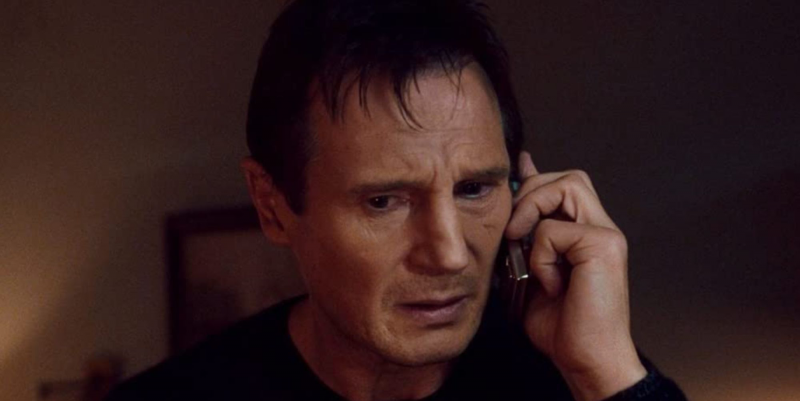
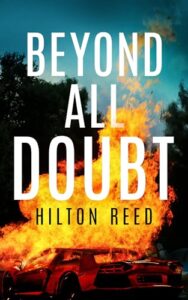

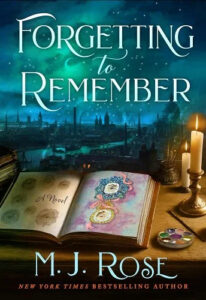


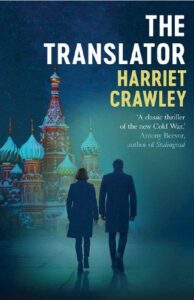
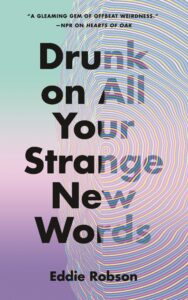
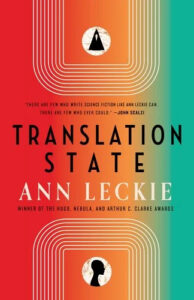
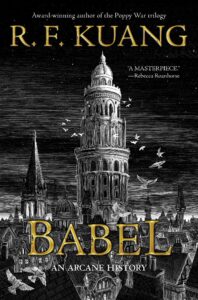


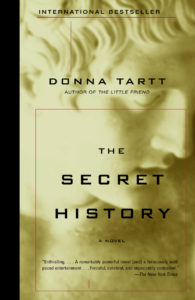

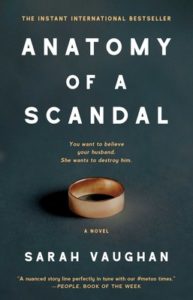

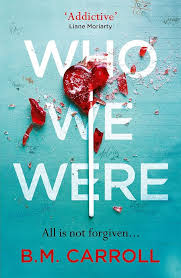
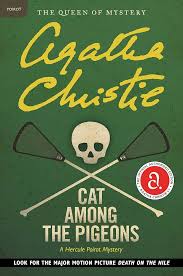
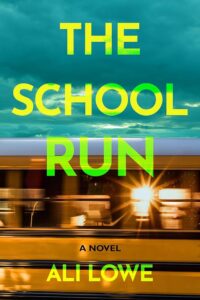
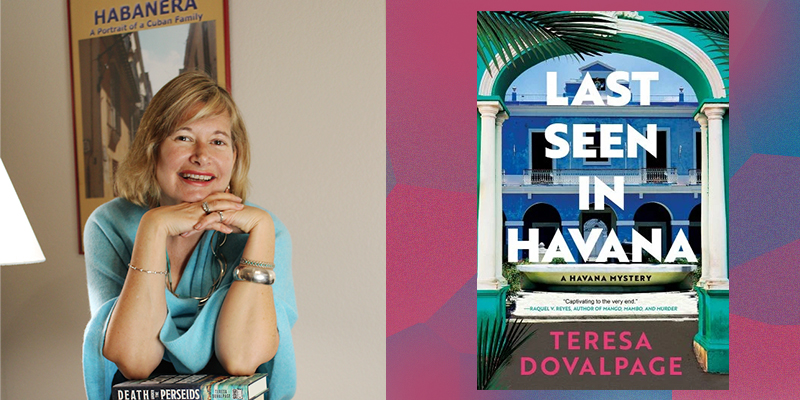
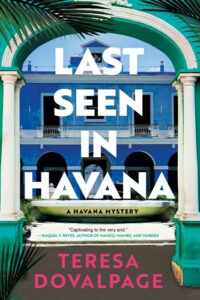


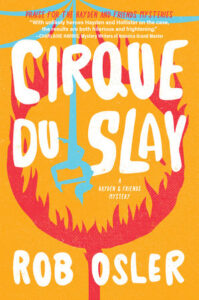

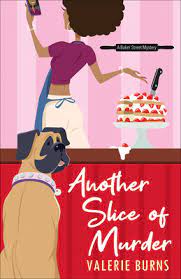
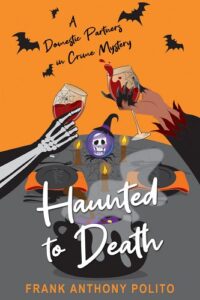




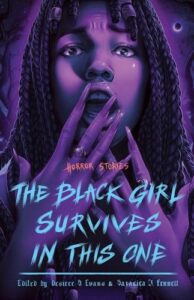

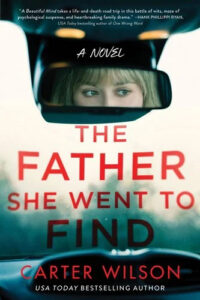

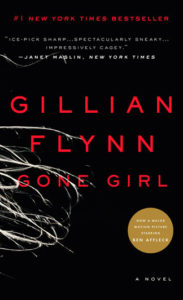
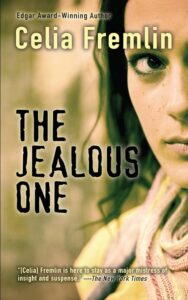
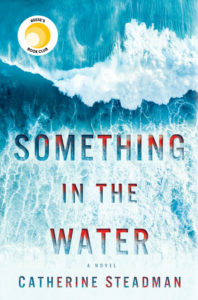
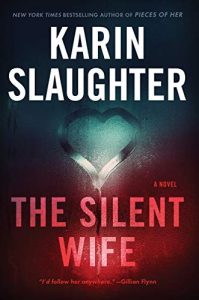


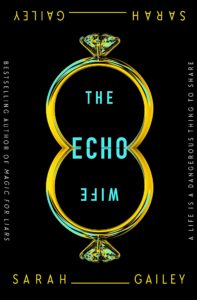
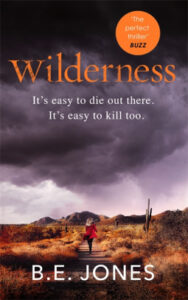

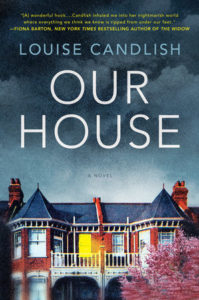
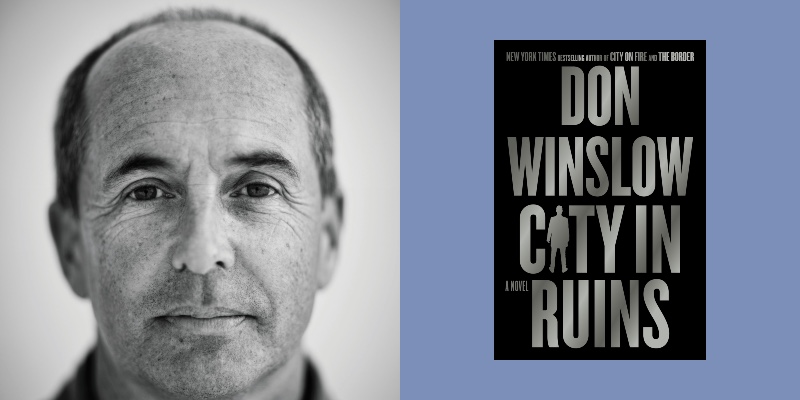

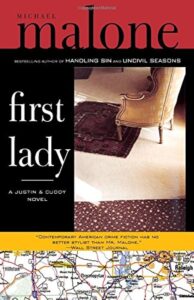
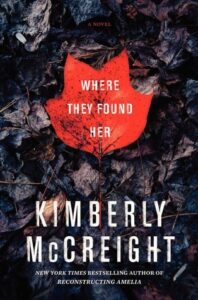
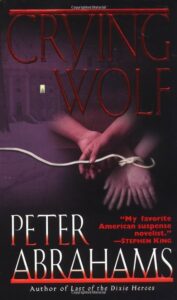
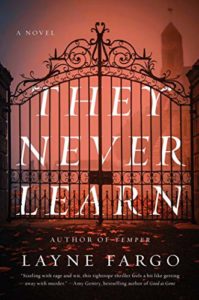
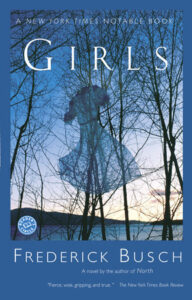
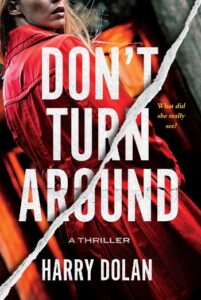
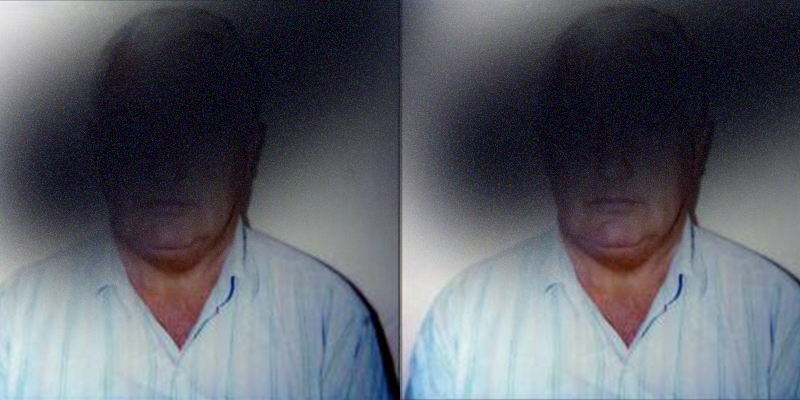
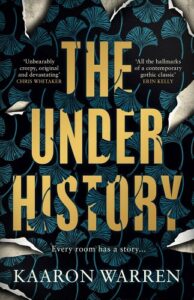



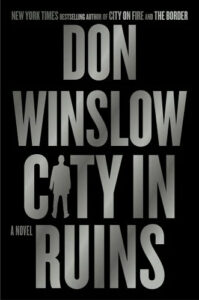

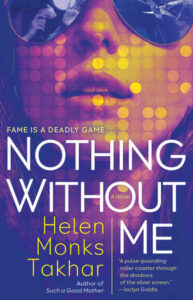

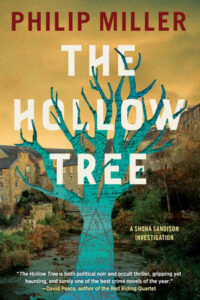
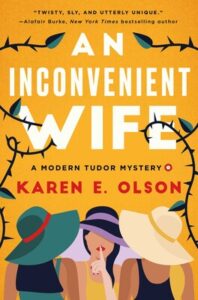





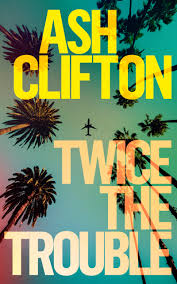

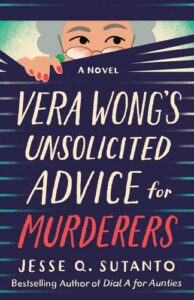
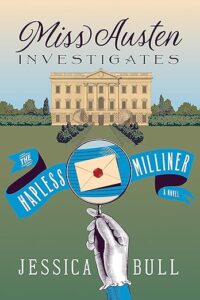
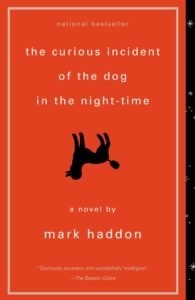
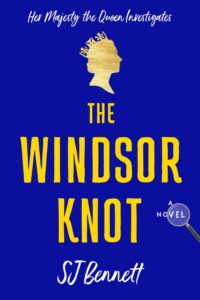

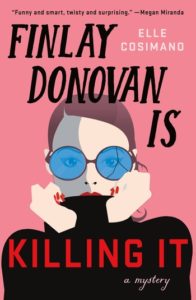
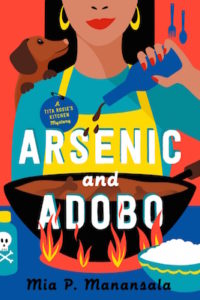


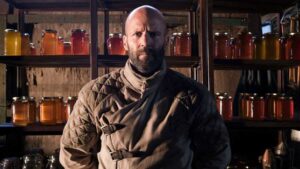

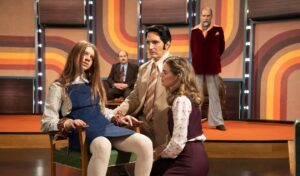
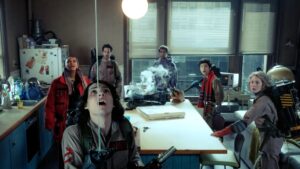

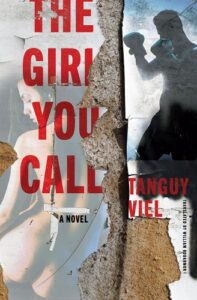

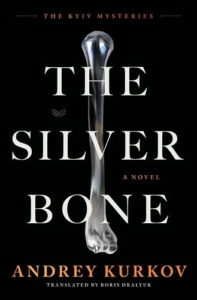


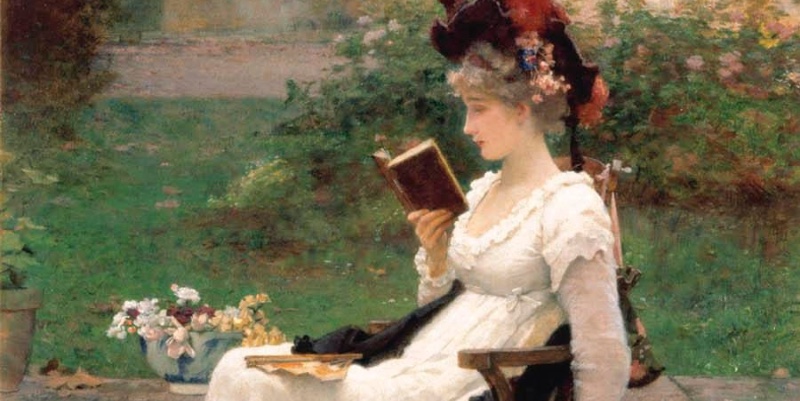
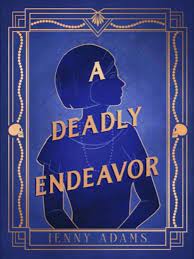

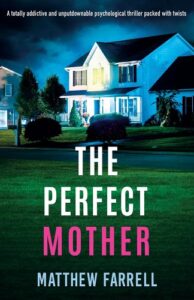


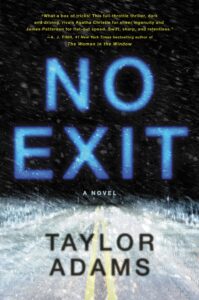
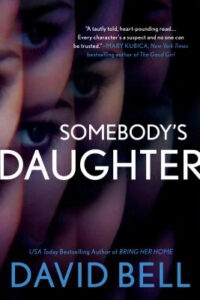



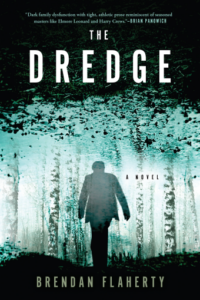




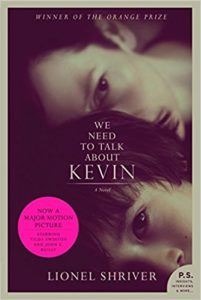
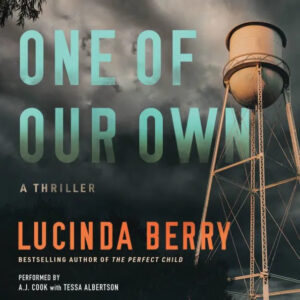
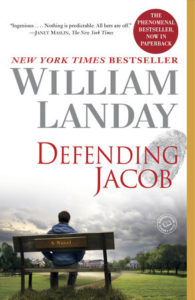
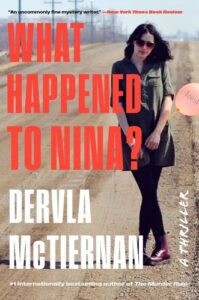

The Jake Gyllenhaal Noir Canon
in Crime Reads - Suspense, Thrillers, Crime, Gun!
Posted
Doug Liman’s “Road House” remake spends most of its runtime keeping things as sunny and breezy as its Florida Keys setting. Elwood Dalton (Jake Gyllenhaal, replacing the original’s Patrick Swayze) is chief bouncer for the eponymous establishment, the kind of happy warrior who’ll drive a bunch of miscreants to the hospital after politely slapping them senseless in a parking lot. But near the film’s climax, Dalton’s character sidesteps in a darker, decidedly unpleasant direction—and places himself firmly in Gyllenhaal’s growing pantheon of warped noir characters.
During the scene in question, Dalton suffers a series of setbacks severe enough to seemingly crack his psyche in two. He responds by crushing an unarmed dude’s throat, then desecrating that dude’s corpse by shooting it full of bullets, then using the corpse as leverage against a corrupt cop. Things are getting deranged, and yet Dalton maintains his aw-shucks attitude throughout, his eyes gleaming with brutal good cheer; for a few minutes, he’s more of a serial killer than a fighting monk. And then the film, as if startled by its own twist, abruptly shifts back into traditional action-movie mode, with Dalton reverting to clichéd tasks such as Saving the Girl and Beating Up the Bad Guy.
That scene alone places “Road House” in the same category as “Nightcrawler,” “Ambulance,” and other neo-noir films in which Gyllenhaal plays some variation of a twitchy psycho, subverting his movie-star image. He’s the latest in a long line of extremely photogenic actors who use noir to toy with the dichotomy between a beatific exterior and a horrifying interior life, and he’s good at it.
“Nightcrawler” (2014) is perhaps the most famous iteration of these noir-centric roles. Gyllenhaal plays Lou Bloom, an L.A.-based news stringer who cruises the night for accidents and murders to film, then sells the footage to local news stations. Lou manipulates and lies his way to success, with an utter willingness to set up situations that result in death. Gyllenhaal lost extreme weight for the role, giving him the hungry countenance of a vulture, and the character has no redeeming features unless you count murderous ambition as a positive.
The “Nightcrawler” role wasn’t an outlier among his morally depraved roles. Take “Ambulance” (2022), which is every inch a Michael Bay joint: even before Gyllenhaal’s Daniel Sharp and his adopted brother Will (played by Yahya Abdul-Mateen II, who panics nicely as the action accelerates) rob a bank and hijack the titular vehicle as part of their getaway, the pace is frenetic, the camera swooping like a meth-addled crow through the action, every character shot at epic angles. In contrast to the funny, generally upstanding protagonists of other Bay films, Gyllenhaal is a genuinely bad man, the type who can disarm with a kind word but jam a rifle in an EMT’s face a few minutes later.
As the movie’s crises accelerate, Gyllenhaal’s glibness tips into pure sociopathy; hints of his later performance in “Road House,” along with a hefty dose of Cagney’s climactic screaming in “White Heat”:
Not all of his characters are warped in quite the same way, even if they’re barely repressing something dark. In “Prisoners,” he plays a detective who begins to snap under the pressure of solving a kidnapping case, alternating between explosive interrogations and shuddery implosions, as in the latter scene:
If we imagine the intensity of Gyllenhaal’s noir performances as a scale, with “Nightcrawler” pegging the needle at a 10 (Maximum Dark) and his cop in “Prisoners” jittering at around a 5 (Typical Twisted Noir Anti-Hero), then his role in David Fincher’s serial-killer flick “Zodiac” probably rates a 1 or 2. Amidst the sprawling investigation into Northern California’s most famous murderer, Gyllenhaal’s Robert Graysmith—a cartoonist who finds himself hunting the Zodiac in parallel with the police and reporters—largely serves as the audience’s avatar. In this instance, the twitchy fireworks largely come from Robert Downey Jr. as Paul Avery:
Gyllenhaal isn’t the first actor to use noir to show his range, along with a dark side; that tradition goes back to the genre’s golden age, where every heartthrob from Kirk Douglas to Fred MacMurray crawled the underside in a few titles. (That’s in addition to the women who played femmes fatales, a role that can veer between misogynistic and empowering, sometimes in the same movie.) The difference is, at least in a contemporary context, most stars seem to keep these journeys limited. Witness Tom Cruise in “Collateral,” doing an excellent job of playing a sociopathic hitman teetering on nervous collapse—and, having shown the world he could do it, opted to never portray that kind of character again.
But Gyllenhaal can’t seem to help himself. Even in a movie like “Road House,” where another star might have demanded a script that made them unambiguously heroic, he’s inclined to infuse at least some moral ambiguity into it, if not psychopathy. In some ways, he’s closer to Michael Shannon than Tom Cruise—and his willingness to explore those depths perhaps makes him noir films’ unsung MVP.
View the full article